
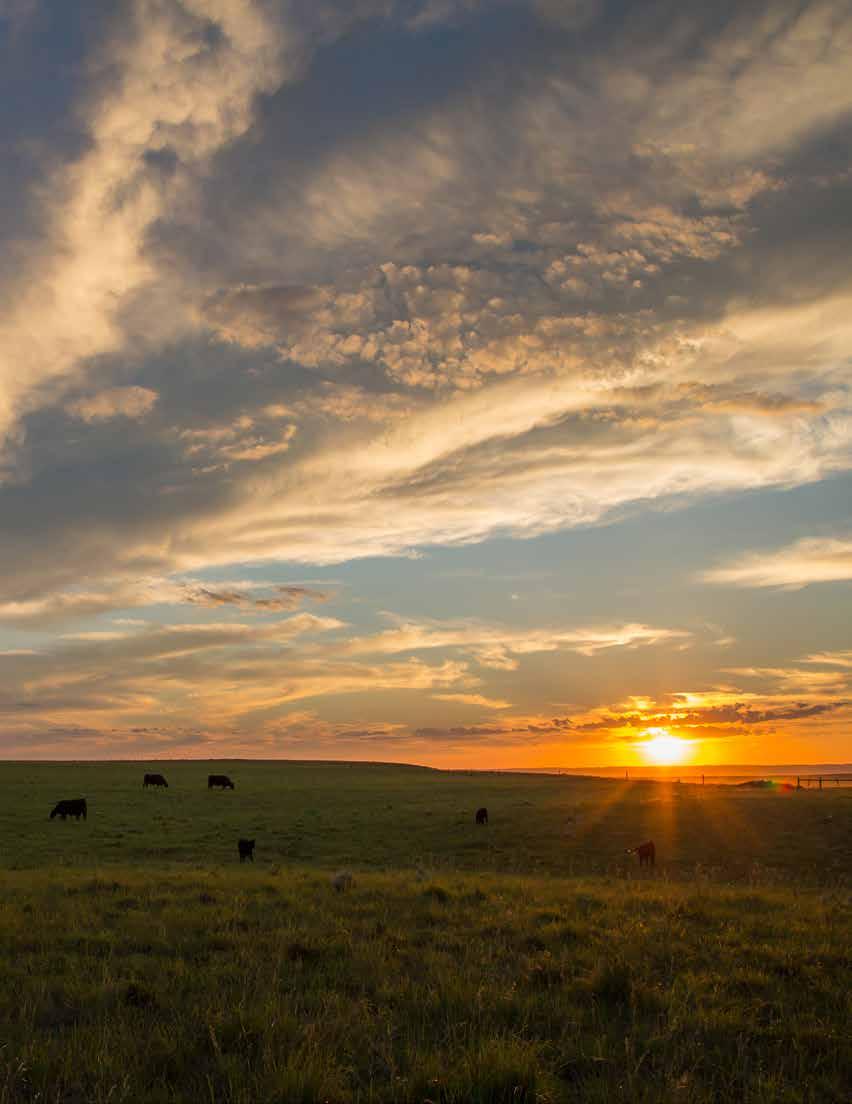
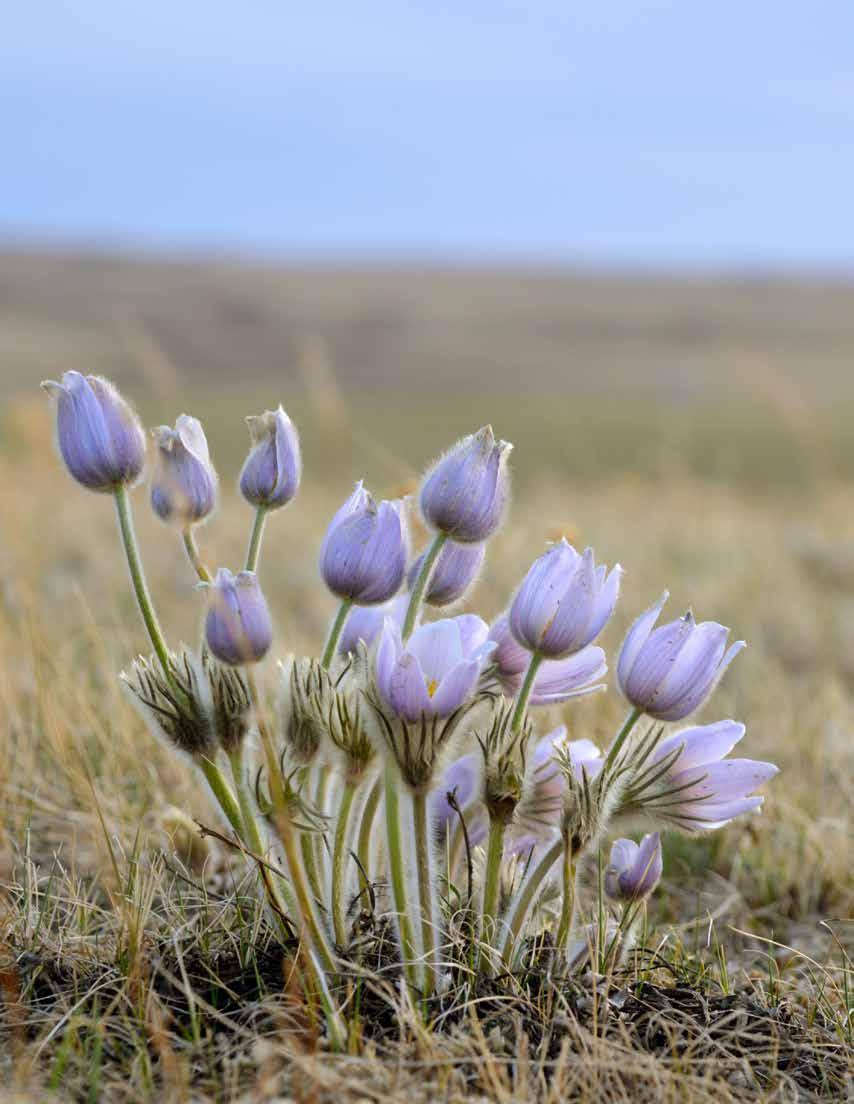


May 2023 Saskatchewan's Premier Cattle Industry Publication Beef Business Saskatchewan`s Premiere Cattle Industry Publication Working for Producers Publication Mail Agreement #40011906 A Saskatchewan Stock Growers Association Publication AGM EDITION BAUMALIGHT.COM Adair Sales & Marketing Company Inc. 306-773-0996 | info@adairreps.com MANUFACTURING MINI SKID STEERS AND A VARIETY OF ATTACHMENTS INCLUDING BRUSH MULCHERS | ROTARY BRUSH CUTTERS | STUMP GRINDERS | TREE SPADES PTO POWER PACKS | AUGER DRIVES | PTO GENERATORS | DRAINAGE PLOWS TREE SAWS & SHEARS | FLAIL MOWER | BOOM MOWERS | EXCAVATOR ADAPTERS TREE PULLERS | TRENCHERS | FELLER BUNCHERS | SCREW SPLITTERS
Healthy calves just mean less expense. We just don’t have extra time and labor to put into treating cattle in a pasture setting. We’ve got a man on the place that can rope or do anything that needs to be done. But the fact of it is, he hasn’t used that rope one time this year for treating any of these calves. As they grow and they develop we just have less issues if we can keep them healthier. ENDOVAC-Beef is the product that is making all the difference in the world. We like cattle to look good and to stay sound and have good feet. We’ve enjoyed the results basically no pinkeye and no foot rot issues. I can tell you from an end user standpoint it’s making us money.
- Dan Leo APEX Cattle
A couple of years ago we had a wreck going and needed a solution. ENDOVACBeef was it! A neighbor recommended the product. I knew it didn’t cost much and I knew what I was doing wasn’t working, so when I found it covered E. coli, Salmonella, Pasteurella, and Mannheimia, I gave it a try. I vaccinated my calves and it worked! Plus, it’s just so easy on them. I give it to my calves around two months of age and again at weaning. The heifers I hold back get it again in June when they go through the chute. It’s just a good product.
The first year we started using ENDOVAC- Beef we had good results. The second year was even better because we implemented it in everything. I vaccinated my cows in April and gave them a booster in June to ensure full protection for my fall calvers and it solved all my scour problems. For those who have spring cows, I would give them a dose in the fall and again in January, about six to seven weeks before they start calving.
Since implementing ENDOVAC-Beef, my medical bill went down and I’m just not treating calves anymore. I haven’t had to doctor one with foot rot either. I can tell you that vaccinating them is cheaper than losing them… it’s worth it. Everything that goes through the chute; cows, calves, and bulls, gets a shot of Endovac at least twice a year now.
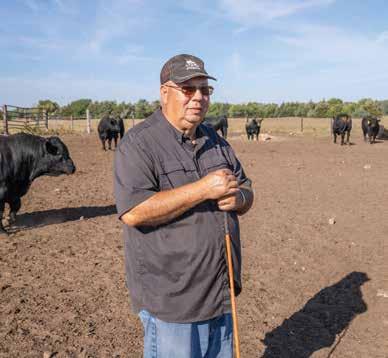
 - JW Henson Hillview Farms
- JW Henson Hillview Farms

DUC Conservation Easements (CEs) pay approximately 30% of current land values, and have no restrictions on haying or grazing*. Contact us to find out how our CEs and other farm-gate programs increase your bottom line and put money back in your pocket: Call 1-866-252-3825 or email du_regina@ducks.ca ag.ducks.ca

“A Ducks Unlimited Canada conservation easement hits all cylinders for our beliefs in conservation and for how our operation runs, including soil health and grazing. It was also a huge financial boost for our operation!”
– CHRIS AND JENNA HUBICK, STRASBOURG AREA RANCHERS AND DUC PROGRAM PARTNERS
*Some conditions apply. Contact DUC for details.
Proud to be your conservation partner
CANADA’S TRACEABILITY PIONEERS
Carl Block
In 1997, a year before CCIA was formed, a group of producers, consultants and business experts, led by the late Carl Block began to lay the groundwork for an agency that would

blaze the trail to traceability.
Carl, a well-known Saskatchewan cattle producer, was named board chair of the fledgling Canadian Cattle Identification Agency and he was joined by others with a stake in the game. Built by industry for industry – the legacy of CCIA’s earliest pioneers continues today.
To learn more about our proud history and the people who roll up their sleeves for animal health and food safety, visit canadaid.ca.

“
“
8 Industry Partners Announce the Completion of Wholesale Beef Reporting Feasibility Assessment
10 2021 Census of Agriculture – Crops in Saskatchewan
12 Fed Budget 2023 Grows Ag with $294.2M Input
14 Governments Invest $485M in Saskatchewan for Five in Five
16 Federal Ministers Respond to Proposed "Product of USA" Labeling Requirements
18 Retail Meat Price Survey 20 Weekly Market
A Saskatchewan Stock Growers Association (SSGA) Publication

General Manager: Chad MacPherson
Box 4752, Evraz Place, Regina, SK S4P 3Y4
Tel: 306-757-8523 Fax: 306-569-8799
Email: gm@skstockgrowers.com
Website: www.skstockgrowers.com
Managing Editor: Kori Maki-Adair
Tel: 403-680-5239 Email: kmaa@shaw.ca
Agri-business Advertising Sales: Diane Sawatzky
Tel: 306-716-4271 Email: sales@skstockgrowers.com
Livestock Advertising Sales:
Tel: 306-757-8523 Email: livestocksales@skstockgrowers.com
Subscriptions
Box 4752, Evraz Place, Regina, SK S4P 3Y4
Tel: 306-757-8523
Fax: 306-569-8799
Email: office@skstockgrowers.com
Subscription Rate: One year $26.50
(GST included) Published five times per year
Design and Layout: Jackson Designs | Candace Schwartz
Tel: 306-772-0376 Email: candace@jacksondesigns.ca
Prairie Conservation Action Plan (PCAP)
Manager: Carolyn Gaudet
Box 4752, Evraz Place, Regina, SK S4P 3Y4
Tel: 306-352-0472
Email: pcap@sasktel.net
Fax: 306-569-8799
SSGA reserves the right to refuse advertising and edit manuscripts. Contents of Beef Business may be reproduced with written permission obtained from SSGA's General Manager, and with proper credit given to Saskatchewan Stock Growers Association. Articles submitted may not be the opinion of SSGA. SSGA assumes no responsibility for any actions or decisions taken by any reader from this publication based on any and all information provided.
Publications Mail Agreement #40011906
Return undeliverable Canadian addresses (covers only) to:
• Alberta Beef Producers
• Alberta Cattle Feeders Association
• Terry Bedard
• Canadian Cattle Association
• Garner Deobald
• Jeff Gaye
• Mindy Hockley
• Chad MacPherson
• Kori Maki-Adair
• Tara Mulhern Davidson
• Jason Pollock
• Garth Woods
Saskatchewan Stock Growers Association Box 4752, Evraz Place, Regina, SK S4P 3Y4 Did
5 www.skstockgrowers.com | ©BEEF BUSINESS | MAY 2023
Contents
? INDUSTRY NEWS
you know that SSGA is Saskatchewan's oldest agricultural association?
6 Riding for the Brand Highlights and Thank You
MARKETS AND TRADE
Urgent
for Industry’s Final Comments to Finesse
30 Satellite-Based Forage Insurance Proven Possible Using AIRBUS GPI Tech 33 New Tech Can Help With AI Timing SCIENCE AND PRODUCTION 34 Active Missing Livestock Files 36 The Old Has Become New Again ASSOCIATION NEWS, REPORTS AND EVENTS 38 SSGA President's Report STEWARDSHIP 40 Finding and Keeping Conservation Common Ground 42 SSGF Exploring New Approach to Term CE Compensation BUSINESS 46 Calendar 47 Advertiser Index 48 Business Directory
Charts FEATURES 22
Call
Trace Regs
This magazine is printed on paper that is comprised of 50% re cycled pa per a nd 2 5% p ost-consumer w aste. I t i s acid-free, elemental chlorine-free and is FSC certified T le h c i y s c M e a R g e a s z a in le e P Follow us on: fb.com/skstockgrowers @SK_StockGrowers Cover photo courtesy of: Tara Davidson
Contributors


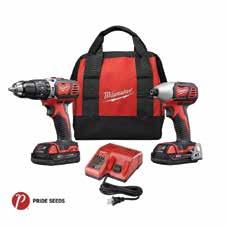




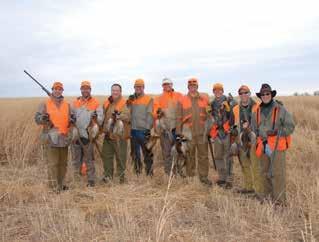


RIDING FOR THE BRAND FUNDRAISING AUCTION www.DLMS.ca Held March 27 - 29, 2023 A FEW OF OUR AUCTION HIGHLIGHTS: You made our auction an overwhelming success, Thank you!
Barber Motors
BeefSmart
Boothman Private Wealth Management
Brett Young Seeds
Britt Ross Photography & Design
Bullseye Feed
Cat Country
CCIA
CDN Beef Industry Conference
Ceres Industries
Cedarlea Farms
Ceva
Charity Booster
D&R Prairie Supplies
DLF Pickseed
Dudley & Co
Feedlot Solutions
Frostfree Nose Pump
Great Western Brewing Company
Hat Doctor
Hi-Tec Profiles
Huber Ag Equipment
Imperial Seed
J5 Bar Mercantile & Sharon Bucsis
Jahnke Ranches Ltd.
Kattle Squared
Lamb Acres
Linthicum Ranch
Mazergroup
Merck Aninal Health/Allflex
MNP
Moose Creek Red Angus
Nahachewsky Charolais
Nelson GM
Nelson Motors & Equpment
Numzaan Safari
Peak Veterinary Health
Pearl Snap Photography
Performance Seed
Pheasant City Lodge

Pride Seed
Pure Passion Outfitting
Range Ward
Red Bow Co.
Saskatchewan Stock Growers Foundation
Saskatoon Media Group – CJWW
Select Sires
SK Sheep Development Board
Solvet
South Country Equipment
South Shadow Angus
STOCKBOSS Energy Free Livestock
Waterers
Sweet Pro
T4 Jean
Target Cattle Concepts
Titan Livestock
Union Forage
Viterra
Western Litho Printers
WestGen
Windy Willows Farm
Young’s Equipment
Zoetis
Thank you to our media partners
620 CKRM RealAgriculture
Saskatoon Media Group
Thank you to all of our generous donors that helped make the auction an overwhelming success!
Industry Partners Announce the Completion of Wholesale Beef Reporting Feasibility Assessment
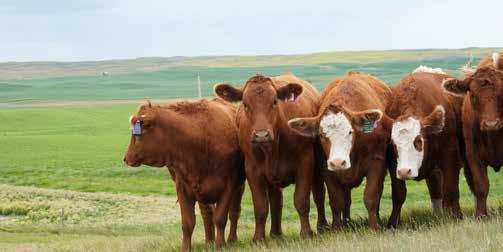
Alberta Beef Producers | Canadian Cattle Association | Alberta Cattle Feeders Association
Alberta Beef Producers (ABP), Alberta Cattle Feeders Association (ACFA), and Canadian Cattle Association (CCA) are pleased to announce the completion of a feasibility assessment of wholesale beef price reporting as Part B of the Alberta Beef Competitiveness Study.
The report was prepared for ABP by Lee Schulz, an associate professor in the Department of Economics at Iowa State University; and Ted Schroeder, a distinguished professor in the Department of Economics at Kansas State University.
The assessment considers the history, value, and options for Canadian boxed beef reporting. It recommends expansion of current reporting criteria to be more comprehensive and suggests
that a mandatory reporting system be considered.
“The proposed changes by Schulz and Schroeder for boxed beef reporting address changes in the market that have occurred since 2016 and many of the concerns raised by industry players,” said Brenna Grant, Executive Director, Canfax and Canfax Research Services. “The broader criteria would be more representative of trade.”
“Producers invest significant dollars into Canada Beef, through the national check-off, each year,” said Janice Tranberg, CEO, ACFA. “They know that the boxed beef price drives value throughout the supply chain. Therefore, the ability for Canada Beef to use this information in
their marketing efforts is critical for both packers and producers, particularly in a weak basis environment.”
In addition to the relative U.S. price, the relationship of boxed beef price to fed cattle prices provides an indication of leverage as it shifts up and down the supply chain, and validates fed cattle prices when volumes are thin.
A voluntary Canadian boxed beef report started in May 2003, following BSE, in recognition of the need for domestic price discovery. This boxed beef report was discontinued in March 2020, with processors citing confidentiality concerns and COVID-19-related disruptions.
“Confidentiality is always a concern and therefore robust participation in any price report is necessary,” said Grant. “However, there are options in how data is presented with AAA/AA cutout and primal values being the main point of a boxed beef report.”
The report is accompanied by a literature review on price discovery and beef industry margins, created by Lyndsay Smith of Prime Analytics.
Funding for this project was provided, in part, by the federal and provincial governments through the Canadian Agricultural Partnership.
Biosecurity Improves Cattle Health
Implement on-farm biosecurity practices to minimize, prevent and control animal diseases. Producers are encouraged to follow strict biosecurity standards when managing their cattle. For more information on biosecurity standards and equipment funding opportunities, call the Agriculture Knowledge Centre at 1-866-457-2377.
8 | ©BEEF BUSINESS | www.skstockgrowers.com MAY 2023 INDUSTRY NEWS
saskatchewan.ca/livestock
B

2021 Census of Agriculture – Crops in Saskatchewan
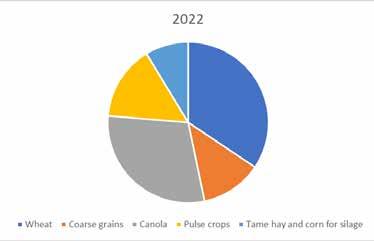
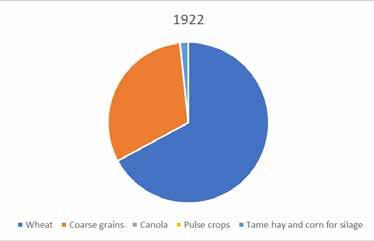 Terry Bedard
Terry Bedard
With #plant23 getting underway, here is some information on crops in Saskatchewan based on the most recent Canadian Census of Agriculture.
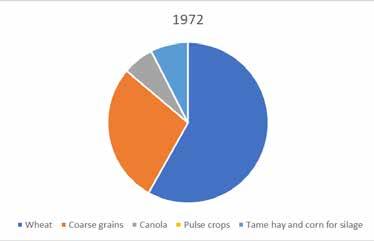
For the 2020-year, oilseed and grain farms made up 60 per cent of the farm types in Saskatchewan.
• Oilseed (except soybean) farms made up 42 per cent of the grain and oilseed farms (33 per cent in 2015) and 25 per cent of the total farms.
• Wheat farms made up 15 per cent of the grain and oilseed farms (16 per cent in 2015) and nine per cent of total farms.
• Other grain farms made up 37 per cent of the grain and oilseed farms (35 per cent in 2015) and 22 per cent of total farms. Crops included here would be coarse grains, canary seed and other specialty crops.
If we look at some of the grain and oilseed crops by a farms’ revenue classes, we see that farms with gross operating revenues of $2.0 million and over had:
• 30 per cent of the spring wheat acreage and nine per cent of the farms that grew wheat.
• 20 per cent of the oat acreage, and six per cent of the farms that grew oats.
• 30 per cent of the barley acreage and 10 per cent of the farms that grew barley.
• 29 per cent of the farms that grew corn for silage and 12 per cent of the farms that grew silage corn.
• 35 per cent of the canola acreage and 10 per cent of the farms that grew canola.
On the census form, if you raise something other than the list of crops or livestock given on the form, you can indicate “Other” and write it in.
Some Saskatchewan farms reported less traditional and smaller acreage crops. These include Kamut, coriander, spelt, quinoa, camelina, millet, fenugreek, wild rice, borage, caraway seed, oil radish and sorghum. Additionally, 51 farms indicated they had “other crops” but did not specify what they were.
The charts provide a look at the changing landscape from 1922, 1972 and 2022 census results.
This is the latest in a series of articles about the agriculture census results.
10 | ©BEEF BUSINESS | www.skstockgrowers.com MAY 2023 INDUSTRY NEWS
B
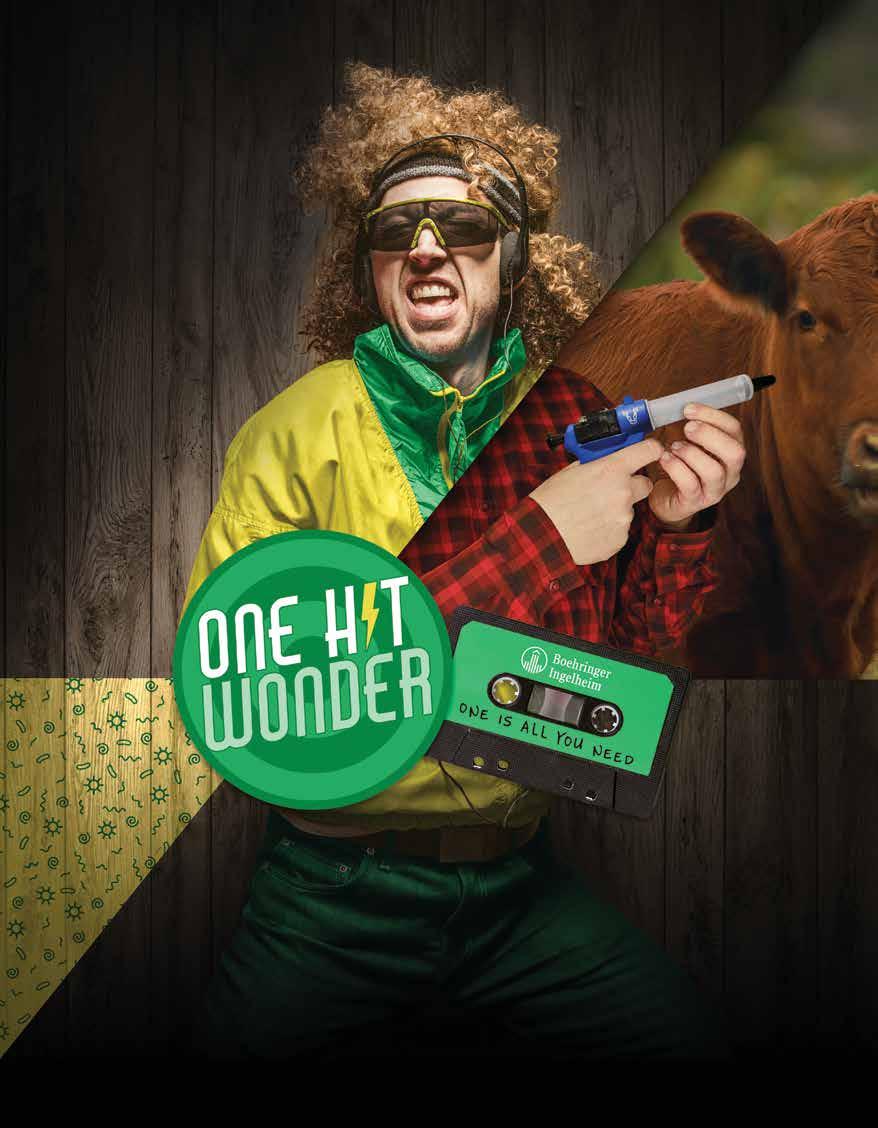
Fed Budget 2023 Grows Ag with $294.2M Input
Kori Maki-Adair
On March 28, 2023, Deputy Prime Minister and Federal Finance Minister Chrystia Freeland released the 2023-2024 Federal Budget, which is designed to impact Canadian ag businesses in four key areas. The budget includes a proposal to boost funding to Agriculture and Agri-Food Canada (AAFC) by $13 million in order to provide a temporary increase of $100,000 to the interest-free limit for loans under the Advance Payments Program (APP) — i.e., from $250,000 to $350,000 for the 2023 program year.

This increase in the interest-free limit means the Government of Canada will pay the interest on the first $350,000 of the borrower’s advance for the 2023 program year. Borrowers will continue to repay the advance as they sell the ag products, with up to 18 months to repay the advance
fully for most commodities (up to 24 months for cattle and bison).
The budget document notes Russia’s illegal invasion of Ukraine “has resulted in higher prices for nitrogen fertilizers, which has had a notable impact on Eastern Canadian farmers who rely heavily on imported fertilizer.”
The APP is a federal loan guarantee program which provides producers with easy access to low-cost cash advances up to $1 million (based on the value of the eligible ag products to be produced or in storage). The program is designed to support farmers as they face rising production costs
With that in mind, the Government of Canada has proposed to add $34.1 million over three years to AAFC’s On-Farm Climate Action Fund (OFCAF) to assist Eastern Canadian farmers to adopt nitrogen management practices,
which will optimize the use and need for fertilizer.
Considering the recent outbreaks of Foot-andMouth Disease (FMD) in Asian and African markets, the federal government and Canada’s livestock industry agree there is a critical need for enhanced emergency preparedness knowing that an outbreak would have major economic implications, including a cut off of exports for all sectors.
Keeping that in focus, the federal budget is also proposing a $57.5 million investment over five years starting in 2023-2024, and $5.6 million ongoing,
12 | ©BEEF BUSINESS | www.skstockgrowers.com MAY 2023 INDUSTRY NEWS
The OFCAF's objective is to support ag producers to adopt beneficial management practices (BMPs) that store carbon and reduce greenhouse gases by means of nitrogen management, cover cropping and rotational grazing practices, which also improve biodiversity and soil health.
for Canadian Food Inspection Agency to develop FMD response plans that include a vaccine bank and a cost-sharing arrangement with each province and territory to continue managing it.
The budget is also committing $184 million over three years to the Species At Risk Act to fund the federal environment, parks, fisheries and natural resources departments to continue their efforts of monitoring the recovery and restoration of species at risk populations.
“We applaud the federal government for these critical additions our programs, which give us hope for a more positive future amidst the hardships and threats we have been facing as an industry. These significant additions to ag funding come at a critical time for ag operations in Saskatchewan and across the Prairies,” said

He added, “As advocates for our members, stewards of lands where species at risk live, we look forward to continuing discussions with our government counterparts to ensure the needs of livestock producers are clearly understood and that funding is also allocated to support and protect Canada’s grasslands in the future.”
According to the budget document, the 2023 Federal Budget is anticipated to result in a deficit of $43 billion for 20222023, and deficits of $40.1 billion for the 2023-2024 budget year.
A BOLDER PERFORMANCE
Outwork your farm chores. The Fendt ® 700 Vario Series tractor can knock out your mowing, baling, loading and feeding for unmatched productivity. No matter the day ahead, this series has the versatility to get every job done. Contact us today for a quote.

13 www.skstockgrowers.com | ©BEEF BUSINESS | MAY 2023
Saskatchewan Stock Growers Association President Garner Deobald.
INDUSTRY NEWS #2 South Plains Road West, Emerald Park, SK 306-781-1077
©2022 AGCO Corporation. Fendt is a worldwide brand of AGCO Corporation. AGCO and Fendt are trademarks of AGCO. All rights reserved.
B
Governments Invest $485M in Saskatchewan for Five in Five
Kori Maki-Adair
The Government of Canada and Saskatchewan Ministry of Agriculture’s joint announcement on March 20, 2023, describes a $485 million investment in Saskatchewan agriculture in five priority areas over the next five years through the Sustainable Canadian Agricultural Partnership (Sustainable CAP).
Sustainable CAP is the current five-year, $3.5 billion agreement between the federal, provincial and territorial governments that is designed to strengthen the competitiveness, innovation and resilience of the ag industry.
“Considering that Saskatchewan’s portion is more than one-seventh of that parcel clearly shows how great our need is right now and how valuable our province is to the future of Canadian agriculture. We applaud our colleagues in the Ministry of Rural Economic Development, Agriculture and Agri-Food Canada and Saskatchewan Ministry of Agriculture for this vote of confidence,” Saskatchewan Stock Growers Association (SSGA) President Garner Deobald said in response to the news.
The Benefits of this product include:
• Your view and cutting ability won’t be hindered
• It PROTECTS you and your windows
• It COSTS LESS than replacing tractor glass
• INSTALLATION TAKES AN HOUR OR LESS
According to Agriculture and Agri-Food Canada’s media release, Sustainable CAP will deliver $89.4 million per year for strategic programming for Saskatchewan farmers, ranchers and ag business. This jump in funding represents an $18.2 million, 25-per-cent increase over the previous federalprovincial partnership.


• It comes with a ONE-YEAR WARRANTY on parts and defects
• The Rock Block REDUCES DOWNTIME for repair
“SSGA’s board has been working hard to communicate the challenges our members and other Saskatchewan producers have been facing across the province. This announcement demonstrates a return on our investment in industry advocacy,” SSGA President Deobald affirmed.
Under this new agreement, effective April 1, 2023 to March 31, 2028, Saskatchewan producers can expect to see the $485 million investment drive opportunities and outcomes for our

a larger per acre payment under the Irrigation Development Program.
industry since the funding will have a continued focus on ag research, increased support for water development, an increased funding cap in the Farm and Ranch Water Infrastructure Program and
“The Sustainable Canadian Agricultural Partnership will help build on the great work already happening in the agriculture industry in Saskatchewan. This investment will see enhancements to existing programs and the introduction of new programs to position us to continue on our sustainability journey, while ensuring the sector continues to grow, prosper and remain competitive,” stated the Honourable David Marit, Saskatchewan Minister of Agriculture.

14 | ©BEEF BUSINESS | www.skstockgrowers.com MAY 2023
INDUSTRY
NEWS
17 INDUSTRY
ARE YOU TIRED OF BREAKING WINDOWS WHILE CUTTING HAY? PROTECT YOU AND YOUR TRACTOR WITH A ROCK BLOCK Phone 605-216-4852 | Email john@therockblock.net www.therockblock.net Use promo code ABP2023 for a $50 DISCOUNT Toll Free: 1-877-COW-CHOW WWW.UNIONFORAGE.COM Graeme Finn 403-312-2240 | Grant Lastiwka 403-350-6394 | Amber McNish 204-264-0609 Ben Stuart 780-888-7303 | Roger Meyers 306-221-1558 | Mark McNinch 306-845-8036 | Mike Witt 250-558-9577 GRAZE YEAR ROUND! Perennial and Annual Grazing Forages Grazing and Haying Alfalfa’s Nutrient Dense Forages and Cover Crops B
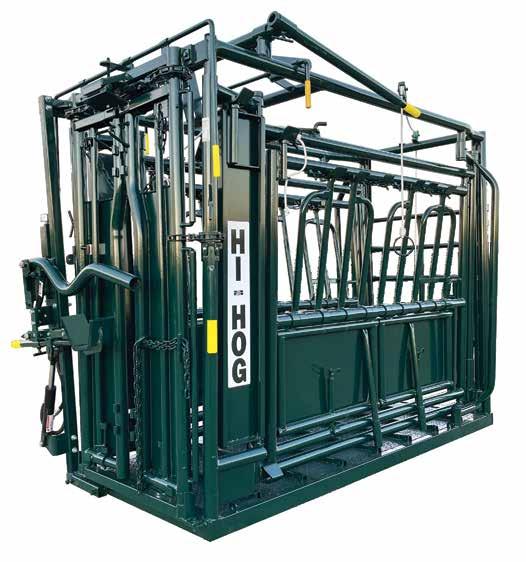
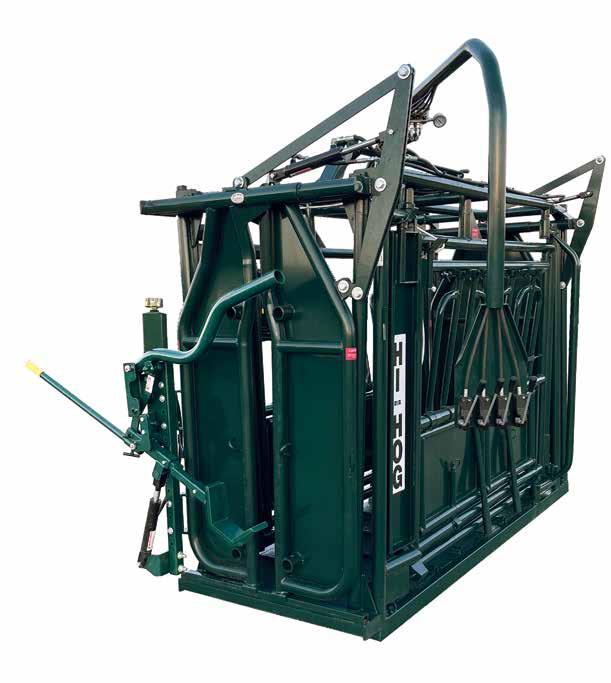


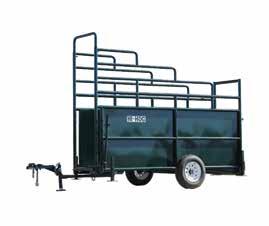

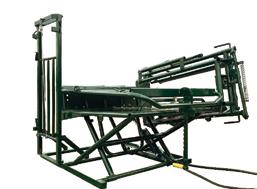

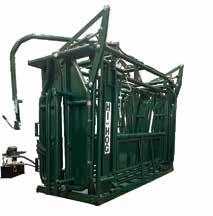
SQUEEZE CHUTES CALVING ENCLOSURES TIPPING TABLES ALLEYS & TUBS CALF ALLEYS LOADING CHUTES Custom Systems Using Stock Components www.hi-hog.com 1-800-661-7002 e-mail us at salesinfo@hi-hog.com
Federal Ministers Respond to Proposed "Product of USA" Labeling Requirements
In response to receiving petitions and comments from members of the public and industry associations requesting an update to current legislation which may have the potential to mislead U.S. consumers about the origin of government-regulated products, the United States Department of Agriculture (USDA)’s Food Safety and Inspection Service (FSIS) released proposed changes to Product of USA Labeling Requirements in early March 2023.
According to the USDA, the intent of the proposed changes is to ensure U.S. consumers understand the information conveyed in “Product of USA” and “Made in the USA” meat, poultry and egg product labels, allowing consumers to comparison shop amongst products based on the value that consumers place
Kori Maki-Adair
on products fully-raised and processed in United States.
Before drafting the regulatory proposal, FSIS conducted a survey to gauge consumers’ understanding of what “Product of USA” and “Made in the USA” claims mean on FSISregulated product labels. What the survey found was that the majority of consumers notice the “Product of USA” label claim on meat products, are willing to pay a premium for meat products bearing the "Product of USA" claim;
however, they do not understand the current “Product of USA” definition.
Therefore, to eliminate the potential for confusion in the marketplace and to protect the interests of U.S. meat, poultry and egg product marketplace, FSIS drafted proposed changes that would require:
The CURRENT definition: As specified by FSIS's Food Standards and Labeling Policy Book, FSIS-regulated products that are derived from animals that may have been born, raised, and slaughtered in another country but are minimally processed in the United States may currently be labeled as “Product of USA.”
• Single ingredient products that claim to be of U.S. origin to be derived from animals born, raised, slaughtered and processed in United States.
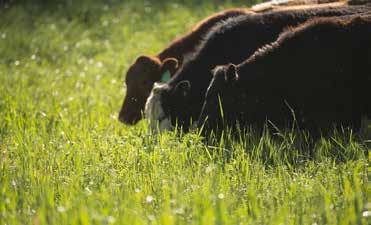
• Multi-ingredient products that claim to be of U.S. origin to have components derived from animals born, raised, slaughtered and processed in United States (other than spices and flavouring), and to have all preparation and processing steps of the ingredients completed in United States.
• SERVICES: Whether you are a specialty producer looking to get your product to a specific market or distributor, or if you are producing commodity livestock for sale, we can partner with you. From our multi-species capabilities to our ability to handle smaller volumes, we offer excellent capabilities for producers in the Canadian Prairies to maximize their profitability.

• FACILITY: We have a state-of-the-art facility to allow us to reach markets across Canada, the USA, and beyond. We understand producer’s needs, their care for their animals, and their honest, straightforward nature. Call us to hear how we can work together to get your product to market.
If finalized within the Product of USA Labeling Requirements, these proposed changes will require all establishments producing meat, poultry and egg products to 1) ensure their FSIS-regulated product labels are updated to be in alignment with the new definitions; 2) pay annual recordkeeping costs; and 3) pay a one-time market-testing cost for each new label to ensure it is correctly understood by consumers.
In response to this announcement, the Honourable Marie-Claude Bibeau, and Minister of International Trade, Export Promotion, Small Business and Economic Development, the Honourable Mary Ng, released the following joint statement on March 7, 2023.
“The Canada and United States meat and livestock sectors are highly integrated. This collaboration contributes to the growth and resilience of farmers and processors on both sides of the border. It also allows us to ensure

16 | ©BEEF BUSINESS | www.skstockgrowers.com MAY 2023 INDUSTRY NEWS
• GRASSFED: “True North Foods is partnered with A&W Canada to supply Canadian grassfed beef for A&W’s grassfed burger program.
| 306-536-6193
all general
204-745-3068
our best.
www.truenorthfoods.ca trever.frattinger@truenorthfoods.ca
For
inquiries call
offering
a reliable supply of highquality products.

“Canada remains concerned about any measures that may cause disruptions to the integrated North American livestock supply chains.

Country of Origin Labeling (COOL) is a U.S. labeling law that requires retailers, such as full-line grocery stores, supermarkets and club warehouse stores, to notify their customers with information regarding the source of certain foods.
- United States Department of Agriculture

“Canada will closely review the proposed amendments to the labelling of meat, poultry and egg products in the U.S. and will participate in the U.S. rulemaking process to ensure that these changes conform to the U.S.’ international trade obligations and do not disrupt supply chains.
“Canada will also firmly oppose any proposition from the United States to renew a mandatory country of origin labelling
system for pork and beef, a practice which the World Trade Organization allowed Canada to take retaliation measures against the United States.
“Canada will work with the U.S. to ensure that new definitions and rules allow farmers, processors and consumers in both countries to continue to benefit from efficient, stable and competitive markets.”
REFERENCES
Federal Register National Archives, The Daily Journal of the United States Government Voluntary Labeling of FSISRegulated Products with U.S.-Origin Claims

https://www.federalregister.gov/ documents/2023/03/13/2023-04815/ voluntary-labeling-of-fsis-regulatedproducts-with-us-origin-claims
Agriculture and Agri-Food Canada Ministers Bibeau and Ng respond to changes proposed to “Product of USA” labelling regulations
https://www.canada.ca/en/agricultureagri-food/news/2023/03/ministersbibeau-and-ng-respond-to-changesproposed-to-product-of-usa-labellingregulations.html
17 www.skstockgrowers.com | ©BEEF BUSINESS | MAY 2023
2023 AUGUST 9 & 10 ASKATCHEWANEast Central Proudly Hosted By: PARKWOOD farm PK ANGUS HS ANGUS DOUBLE C red ANGUS DUAL E CATTLE CO. CRESCENT CREEK ANGUS TRIPLE H RED ANGUS 4K ANGUS BLACK RIDGE ANGUS NU-HORIZON ANGUS Host Hotel & Accomodations: holiday inn - (306) 782-9888 yorkton city campground - (306) 786-1757 yorkton lake regional park - (306) 782-7080 Entertainment provided by: Quick Dick Mcdick DISPLAY SPACE AVAILABLE THROUGHOUT THE TOUR - $100 PER PEn Showcase your cattle! Join us on Facebook EAST CEnTRAL Sk AnGUS TOUR fOR TOUR UPDATES & mORE DETAILS Early Bird Draw REGISTER BEfORE JUnE 1, 2023 TO BE EnTERED In OUR EARLY BIRD DRAw SUmmER PASTURE TOUR S INDUSTRY NEWS B
RETAIL MEAT PRICE SURVEY








as of April 26, 2023 ($/lb)
These prices were noted at store locations in Regina, Saskatchewan.

CONSISTENT






labeled for the control of Ground



18 | ©BEEF BUSINESS | www.skstockgrowers.com MAY 2023
SUPERSTORE SOBEYS CO-OP SAVE-ON-FOODS SAFEWAY Ground beef - lean $ 5.29 $ 5.49 $ 5.99 $ 4.99 $ 5.99 Cross rib roast $ * $ 10.00 $ 7.99 $ * $ 7.99 Rib roast $ 19.00 $ 23.03 $ 20.35 $ 21.50 $ 20.35 Outside round roast $ 7.99 $ 6.00 $ 8.49 $ 8.98 $ 8.49 Inside round roast $ 9.99 $ 7.99 $ 8.87 $ 11.98 $ 8.87 Ribeye steak $ 22.50 $ 27.04 $ 22.99 $ 26.49 $ 22.99 Round steak $ 9.99 $ 11.04 $ 8.50 $ 8.48 $ 8.50 Sirloin steak $ 10.99 $ 5.99 $ 10.99 $ 14.47 $ 10.99 T-bone steak $ 18.49 $ 22.03 $ 16.99 $ 19.00 $ 16.99 Tenderloin $ 34.00 $ 39.67 $ 23.99 $ 38.01 $ 23.99
MARKETS AND TRADE
• INNOVATIVE • VERSATILE • PROBLEM SOLVER Rozol RTU* is
Squirrels
Gophers Ground Force Paraffinized Pellets* is
for
of Voles, Ground Squirrels,
Mice *Commercial Product Only: Only to be used by certified pest control operators, farmers and persons authorized in government pest control programs. PROTECTING YOUR RANGE & CROPLAND For Nearest Dealer: 866.572.8240 Distributed by: liphatech.ca • 866.590.3444 For Technical/Label Questions:
RELIABLE
These words aren’t applied to just any rodent control bait. They are applied to Rozol RTU & Ground Force, rodent control baits that have been helping protect your range & cropland for many years. CONTROL LEARN MORE
& Pocket
labeled
the control
Rats &
DECADES OF
RODENT
Between now and December 31st, 2023 active Members of the SSGA will receive a $1,250 Young’s Equipment Gift Card for Parts and/ or Service at any Young’s Equipment location with the purchase of any of the following new units:

- Case IH MFD Loader Tractor (60-185 HP)
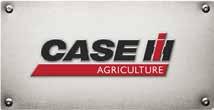
- Case IH RB565 Round Baler
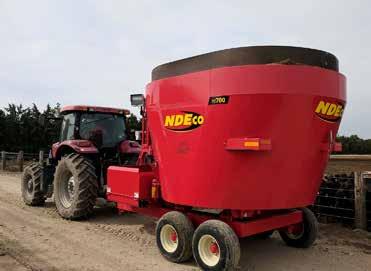

- NDE Vertical Mixer
- Highline *NEW* BP60 series Bale Pro®

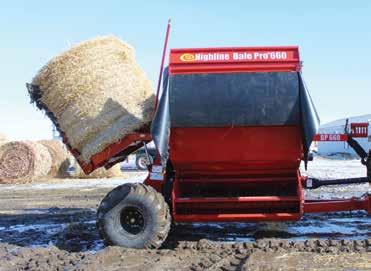


In addition to that, we will donate $250 per unit sold to the Saskatchewan Stock Growers Association to support their formidable cause.

MARKETS AND TRADE
For more information visit www.canfax.ca
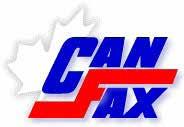
SK
SK

AB Fed Steer Prices
Alberta Weekly D1 & D2 Cows
Lethbridge Barley
20 | ©BEEF BUSINESS | www.skstockgrowers.com MAY 2023 165.00 185.00 205.00 225.00 245.00 265.00 285.00 305.00 Wk 1 Wk 4 Wk 7 Wk 10 Wk 13 Wk 16 Wk 19 Wk 22 Wk 25 Wk 28 Wk 31 Wk 34 Wk 37 Wk 40 Wk 43 Wk 46 Wk 49 Wk 52 Price per hundred weight
Weekly Average Price Heifers 500-600 lbs 2023 2022 2021 0.72 0.73 0.74 0.75 0.76 0.77 0.78 0.79 0.80 0.81 Wk 1 Wk 4 Wk 7 Wk 10 Wk 13 Wk 16 Wk 19 Wk 22 Wk 25 Wk 28 Wk 31 Wk 34 Wk 37 Wk 40 Wk 43 Wk 46 Wk 49 Wk 52 CDN $US terms Weekly Canadian Dollar 2023 2022 5 yr avg 20182022 200.00 220.00 240.00 260.00 280.00 300.00 320.00 340.00 Wk 1 Wk 4 Wk 7 Wk 10 Wk 13 Wk 16 Wk 19 Wk 22 Wk 25 Wk 28 Wk 31 Wk 34 Wk 37 Wk 40 Wk 43 Wk 46 Wk 49 Wk 52 Price per hundred weight
Weekly Average Price Steers 500-600 lbs 2023 2022 2021 60 70 80 90 100 110 120 130 140 Wk 1 Wk 4 Wk 7 Wk 10 Wk 13 Wk 16 Wk 19 Wk 22 Wk 25 Wk 28 Wk 31 Wk 34 Wk 37 Wk 40 Wk 43 Wk 46 Wk 49 Wk 52 Price per hundred weight
2023 2022 2021 Source: CanFax 135.00 145.00 155.00 165.00 175.00 185.00 195.00 205.00 215.00 225.00 235.00 Wk 1 Wk 4 Wk 7 Wk 10 Wk 13 Wk 16 Wk 19 Wk 22 Wk 25 Wk 28 Wk 31 Wk 34 Wk 37 Wk 40 Wk 43 Wk 46 Wk 49 Wk 52 Price per hundred weight
2023 2022 2021 190.00 240.00 290.00 340.00 390.00 440.00 490.00 Wk 1 Wk 4 Wk 7 Wk 10 Wk 13 Wk 16 Wk 19 Wk 22 Wk 25 Wk 28 Wk 31 Wk 34 Wk 37 Wk 40 Wk 43 Wk 46 Wk 49 Wk 52 Price per tonne
2023 2022 2021 2020 Weekly Canadian Dollar Source: CanFax Source: CanFax Source: CanFax Source: CanFax Source: CanFax
Price
Source: Bank of Canada
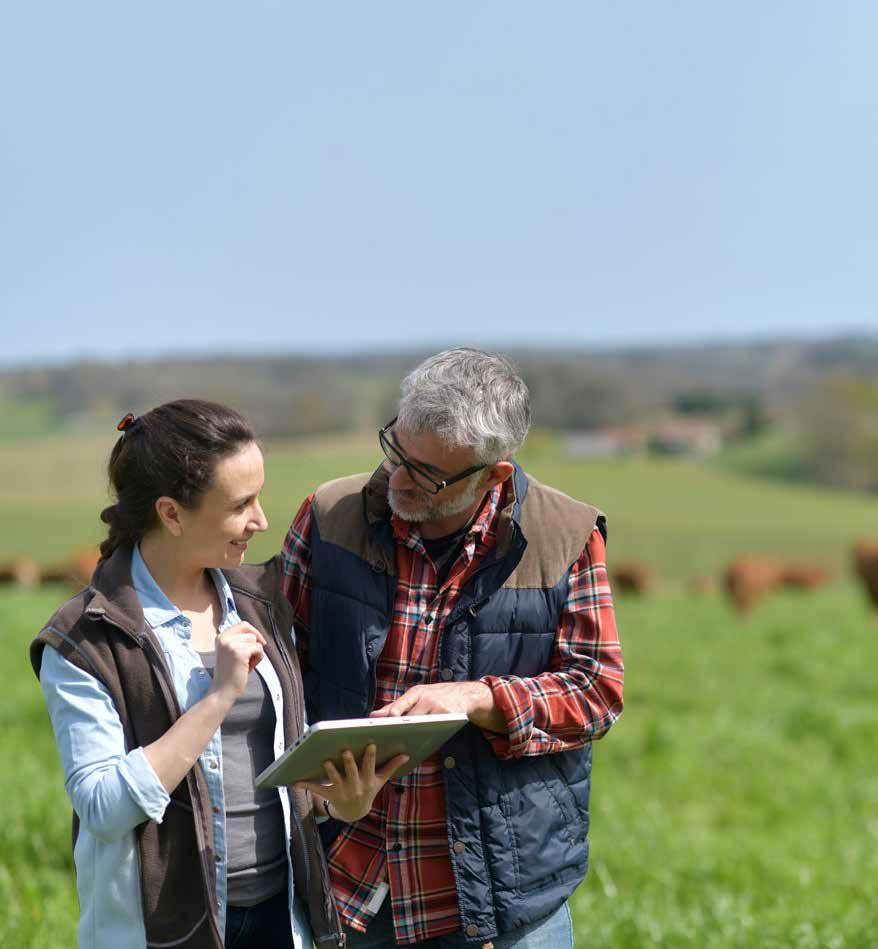

MNP.ca Our local practitioners specializing in the livestock industry can help minimize your taxes, maximize results, and optimize your operations. Chance Chickoski, CPA, CA | 306.770.3623 | chance.chickoski@mnp.ca Agriculture is your life You deserve an advisor who gets what’s on the line.
Urgent Call for Industry’s Final Comments to Finesse Trace Regs
Kori Maki-Adair
Impact comes from action.
Industry and government have survived unforgettable hardships by working together since the first Canadian-born case of BSE (Bovine Spongiform Encephalopathy) was reported in May 2003, which resulted in more than 30 countries placing trade restrictions on beef exports from Canada.
Thanks to a number of safeguards industry and government have implemented to improve disease surveillance activities in order to respond to disease outbreaks and food safety issues, despite the discovery of an additional 18 cases of BSE in cattle born in Canada, most of these restrictions have been lifted.
As a well-earned reward for dedicating 18 years to strategic planning and emergency preparedness measures, the World Organisation for Animal Health (OIE) World Assembly of Delegates officially recognized Canada as a country with negligible risk for BSE, which means Canada has now achieved “the most preferred status under the OIE’s threetiered categorized system for evaluating BSE risk,” according to a CFIA news release dated May 27, 2021.
A significant portion of the emergency preparedness measures Canada has implemented includes a livestock traceability system, which is designed to track an animal or its carcass from one point in the value chain to another, forward or backward (i.e., animal movement). To be fully-functional, a traceability system relies on three pillars: 1) animal identification, 2) premises identification and 3) animal movement.
Essentially, that means: 1 + 2 = 3.
Though industry and government have laid the groundwork for a fullyfunctioning traceability system by
implementing animal and premises identification programs across Canada, the requirement to report animal movement has yet to be finalized in legislation and put into widespread practice.
Industry and government agree that without the animal movement component in a traceability system, there are gaps in the data that can delay emergency response.
According to Saskatchewan Stock Growers Association (SSGA) President Garner Deobald, his greatest concern about these changes is how to facilitate digital reporting requirements at livestock operations where labour, continuallychanging technology and Wi-Fi communication resources may be limited or non-existent — quite possibly, making regulatory compliance unrealistic for some livestock operators.
He also said, “The government will need to allocate funding for livestock operators to purchase and upgrade tag reading equipment. The additional cost for labour and technology that will be required to report traceability-related data may lead some cow-calf producers to the brink, or out of the business. Many of us are already reaching our limits managing inflation, interest rates, taxes and drought recovery.
“Five years ago, there was a funding program in Saskatchewan that assisted livestock operators to purchase approved reader equipment. SSGA’s board and members would like to see the government revive and update that program though the new Sustainable Canadian Agricultural Partnership agreement.”
He also says that since the uncontrollable risk factors that negatively affect the implementation of animal movement reporting are complex and unique to each livestock sector, the consultation phase
to develop animal movement reporting regulations has been underway for more than a decade.
As a beef producer before, during and after BSE, Deobald has hands-on experience using deregulated dangle tags (that were read with line of sight only) and the approved indicators for cattle today, which use radio frequency identification (RFID) technology (that can be read visually and with RFID reader technology).
Deobald said, “In terms of animal ID, at the start of the program, there was a great disparity between industry and government’s expectations and the realities of tag retention.”
To work through those challenges, industry and government have relied on Canadian Cattle Identification Agency (CCIA) to develop a testing program that ensures approved indicators are robust enough to withstand the roughest conditions that animals, nature and handling present while being as safe as possible for the person applying the indicator — and as comfortable as possible for the animal bearing the indicator through its lifecycle.
CCIA’s Tag & Technology Manager Paul Laronde posted on CCIA’s Instagram account that “in the early years, CCIA developed a testing program to ensure that any tag entering the system met basic performance requirements. Over time, those requirements have become more robust and now include internationallyaccepted testing procedures, both in the lab and in the field. The tag approval process we use today is transparent and thorough. All tags used in the national program are tested and approved by the Minister of Agriculture and must meet strict international standards.”
CCIA also ran a multi-year tag retention project to assess the full array of approved indicators on cattle ranches across
22 | ©BEEF BUSINESS | www.skstockgrowers.com MAY 2023 FEATURE
Canada. At its conclusion, the project produced statistically-relevant data showing that retention was lower than what animal ID regulations were willing to permit. As a result, CFIA adjusted the current regulatory proposal to allow for a greater incidence of tag loss without penalty to livestock operators and transporters that are in possession of untagged animals.
To address the issue of pricing and availability differences across the country, CCIA also launched a tag web store that provides industry and authorized dealers with quick and handy access to the full array of approved animal indicators at competitive prices delivered to the buyer’s mailbox. Alternatively, if livestock operators prefer to purchase tags at their local farm stores, they can do that too.
With animal identification now fullyintegrated and accepted across the country, industry and government have been focusing on PID assignments to prepare livestock operators for impending PID regulations. To do so, a valid PID is

now required to access most government programs and is requested when purchasing approved indicators.
How do you get a PID if you don’t have one yet?
Government has handled that. Today, each province and territory has its own PID registry which receives and validates the contact information, location, type of ag operation and animal species kept at a specific land location within its borders (i.e., a unique premises), then assigns a unique identification number to that unique premises.
Acquiring a PID is quick, simple and cost-free to applicants. To learn more or to apply for a PID account, Saskatchewan livestock operators may contact the Agriculture Knowledge Centre at 1-866-457-2377 or visit premisesid.saskatchewan.ca.
With the first two pillars underway, the third pillar — animal movement reporting — is becoming more feasible.
We’ll take it from here.
It’s also why CFIA has included it in the proposed changes to Part XV of the Health of Animals Regulations (Identification and Traceability), which CFIA has published online in Canada Gazette, Part I, Volume 157, Number 11: Regulations Amending the Health of Animals Regulations (Identification and Traceability) with an invitation to industry members to improve the proposed changes by sharing their feedback in the final 90-day comment period from March 18 to June 16, 2023.
Recognizing the importance of industry’s participation and the value of their time and input, we have prepared a quick reference on CFIA’s proposed changes that include shortening the time period allowed to report events, adding a requirement to provide PID information, and reporting domestic movements of livestock.
Here goes...
continued on page 24
At last, Canadian cattle producers have a research proven, field tested solution to their horn fly problems. Feed in a Drum® and SmartLic® tubs are available with Altosid®, an insect growth regulator proven to disrupt the lifecycle of horn flies—the only of its kind available in Canada delivered in a convenient supplement tub.
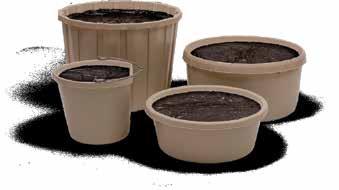
23 www.skstockgrowers.com | ©BEEF BUSINESS | MAY 2023 FEATURE
Thanks Garlic Print Ad - Beef Business Saskatchewan - May 2023 Issue - Half Page 7.625”x4.875” - 4c newgensupplements.com SmartLic®, The Feed in a Drum® are registered trademarks of Animal Feed Supplement, Inc. DBA New Generation Supplements. Altosid® is a registered trademark of Wellmark International, also known as Central Life Sciences®
FEATURE
Urgent Call
cont. from pg. 23
TRACEABILITY PILLAR ONE: ANIMAL IDENTIFICATION
The current regulations regarding animal identification would be maintained. An approved animal indicator would be required to identify cattle before the animal leaves a site; however, there would be two exemptions:
• If applying an approved indicator may cause serious injury to any person attempting to do so, the livestock operator may move the animal to an approved animal identification site (formerly known as a tagging site) in order for an approved indicator to be applied to the animal; and/or
• If an animal is being seized based on welfare issues, urgently evacuated or if its anatomy does not allow for the application of any of the approved indicators for its species.
Impact defines power.
Thanks to on-the-ground, locally-hosted ranch tours by Saskatchewan livestock operators, CFIA was able to gain a genuine understanding of the challenges that exist for livestock sites that unexpectedly receive animals that are not bearing an approved indicator. As a result, the proposed regulations include repealing the current requirement that prohibits livestock sites from receiving animals or carcasses that are not identified by approved indicators
In the opinion of SSGA President Garner Deobald, “It was that key field perspective that influenced CFIA’s proposed regulations, which now recommend the repeal of current legislation that prohibits livestock operators from receiving an animal or the carcass of an animal that is not identified with an approved indicator.
“It’s an excellent example of how industry can impact these regulations by portraying their situations in the clearest terms possible, presenting their opinions with specific details, making actionable suggestions for improvement and offering their continuing support by
making themselves available for these consultations.”
LOSS OF APPROVED INDICATORS
In terms of recordkeeping, the proposed regulations would repeal the requirement to record the application of an approved indicator being applied to an animal that has lost its indicator.
Instead, the proposed changes would require a livestock operator to report the application of an approved indicator being applied to an animal that has lost its initial indicator within seven days of application at livestock operations that are not that animal’s farm of origin.
Only assembly points would be approved as animal ID sites for cattle. Feedlots would no longer be approved as animal ID sites.
According to CFIA's website, an ASSEMBLY POINT is an auction market, assembly yard or other site where animals are temporarily collected to be sold or redirected to another site, but does not include an abattoir, farm, feedlot, community pasture, fair ground, AI unit, zoo or the site of an event such as a rodeo or exhibition.
TRACEABILITY PILLAR TWO: PREMISES IDENTIFICATION
All livestock operations would be required to obtain a valid PID from the provincial/territorial registry where their livestock operation is located and keep it up to date.
Reporting the replacement event would require the ID number of the new indicator; the ID number of the lost indicator, if known; the PID of the present site where the new indicator is applied; the PID of the departure site (where the animal was received from without an indicator, if known); and the licence plate number or the conveyance ID that transported the animal, if applicable.
DEATH OF CATTLE
Though proposed changes would repeal recordkeeping requirements for the slaughter or death of cattle and the identification number on its approved indicator; CFIA’s changes would reduce the reporting time from 30 to seven days for the on-site disposal of cattle carcasses. Reporting a disposed event would require the PID of the disposal site, the date of the disposal and the identification number on the approved indicator.
ANIMAL IDENTIFICATION SITES
Only cattle that may cause serious injury to any person that attempts to apply an approved indicator to it may be sent to an approved animal ID site for the application of an approved indicator.
Livestock operations would be required to report their provincially/ territorially-validated PID to purchase approved indicators and to report information related to the identification of their cattle or their movements.
TRACEABILITY PILLAR THREE: ANIMAL MOVEMENT
For departure sites, move-out event reporting would continue to be optional. The proposed requirements would require livestock operators to report the departure of animals only if the animals are moving to a community pasture In relation to community pastures, livestock operators would be required to:
• Identify all cattle with an approved indicator before moving animals from their site to a community pasture;
• Report the departure of animals from their site to a community pasture (move-out reporting) within seven days of the event; and
• Report the return of their animals from a community pasture to their site (move-in reporting) within seven days of the event.
To report the departure and return events, the livestock operator would need the PID of the departure site, PID of the arrival site, date the cattle left the site, species of each animal transported, quantity of animals by species and the licence plate number or conveyance ID.
24 | ©BEEF BUSINESS | www.skstockgrowers.com MAY 2023
Transporters of livestock!
In fact, though already in place in Saskatchewan, CFIA’s proposed regulations would require transporters of livestock to maintain a manifest document that includes the PIDs of the departure and destination sites, the quantity of animals or their carcasses, the date and time the animals or their carcasses left the departure site and the licence plate number or conveyance ID.
According to CFIA's website, a COMMUNITY PASTURE is a pasture that is managed by or leased from the Government of Canada, a provincial government or a municipality, or that is owned by, managed by or leased from a community pasture association, grazing association or a grazing cooperative and where animals from more than one operator of a farm are assembled and comingled.
site, date and time the animals left the departure site, date and time the animals arrived at the destination site, the identification numbers of the approved indicators, and the licence plate number or conveyance identification.

The proposed regulations would not require livestock operators to report movement of animals within the same farm, nor animals returning from a leased pasture where all the cattle kept at that pasture were from the same farm.

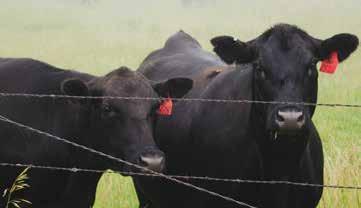
EXPORT


Transporters of livestock would also be required to provide those data points to departure and arrival sites, and to keep a record of this information for two years.
THE PASSIVE READING PRINCIPLE
If a livestock operator is using reading equipment to read approved indicators and the ID number is not read by the equipment on the first reading, the proposed regulations would not require the livestock operator to report the ID number 1) if the reading equipment is listed on CCIA’s website; 2) if the reading equipment has been installed in accordance with the manufacturer’s instructions; and 3) if the livestock operator has maintained the equipment and performed tests to ensure that it functions as intended.


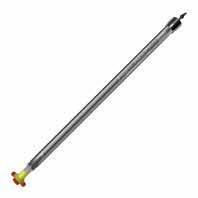
ARRIVAL OF CATTLE OR CARCASSES
With the exception of operators of community pastures, the proposed changes would require livestock operators to report cattle arriving at their site within seven days (i.e., move-in event reporting).
The move-in event report would require the livestock operator to submit the PID of the departure site, PID of the destination
In addition to the requirement of applying an approved indicator to an animal before loading it for export, the proposed regulations would require a livestock operator to report the export of cattle within seven days (i.e., export event reporting).
The export event report would require the PID for all sites where the animals were loaded, the dates the animals were loaded at each of those sites, the quantity of animals that were loaded at each of those sites, the identification number on each of the approved indicators, the location(s) to which the animals are being exported, and the licence plate number or conveyance information.
IMPORT


Instead of allowing livestock operators to provide or apply an approved indicator to cattle that are located in a foreign country before they are imported, proposed changes would require livestock operators to apply an approved indicator to unidentified cattle at the first site where they are unloaded after they have been imported, only.

That’s it. Next steps?
25 www.skstockgrowers.com | ©BEEF BUSINESS | MAY 2023 Dale Watson 306.861.4618 Austin Watson 306.861.7031 Brody Ward 306.861.7191 For safe and effective drug delivery, choose Pneu-Dart For more than 50 years, Pneu-Dart has offered the best remote injection equipment for your drug delivery needs.
Model 196
Model 389 animal targetcattleconcepts@gmail.com targetcattleconcepts.com Follow us on
Less stress on the Our Remote Drug Delivery (RDD) systems are designed to capture or medicate while minimizing stress on animals. Whether you're treating freerange cattle, sedating cervid livestock, or assisting in the translocation of wild animals, Pneu-Dart manufactures the products to handle every target situation. BECAUSE YOU CAN’T AFFORD TO MISS
Canadian Distributor | Since 2012
High tech darts for ideal delivery No need to confine
FEATURE
continued on page 28
Curious about who and what the proposed changes would be introducing as entirely new elements to the regulations?
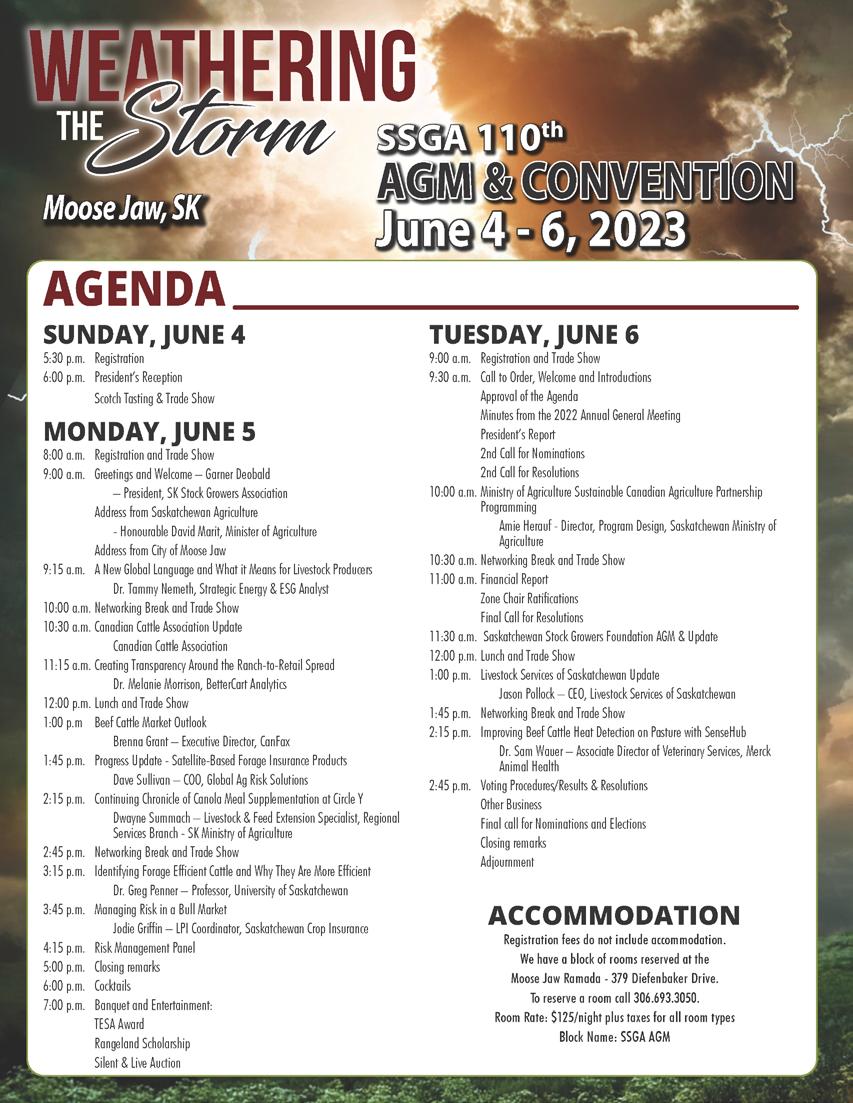
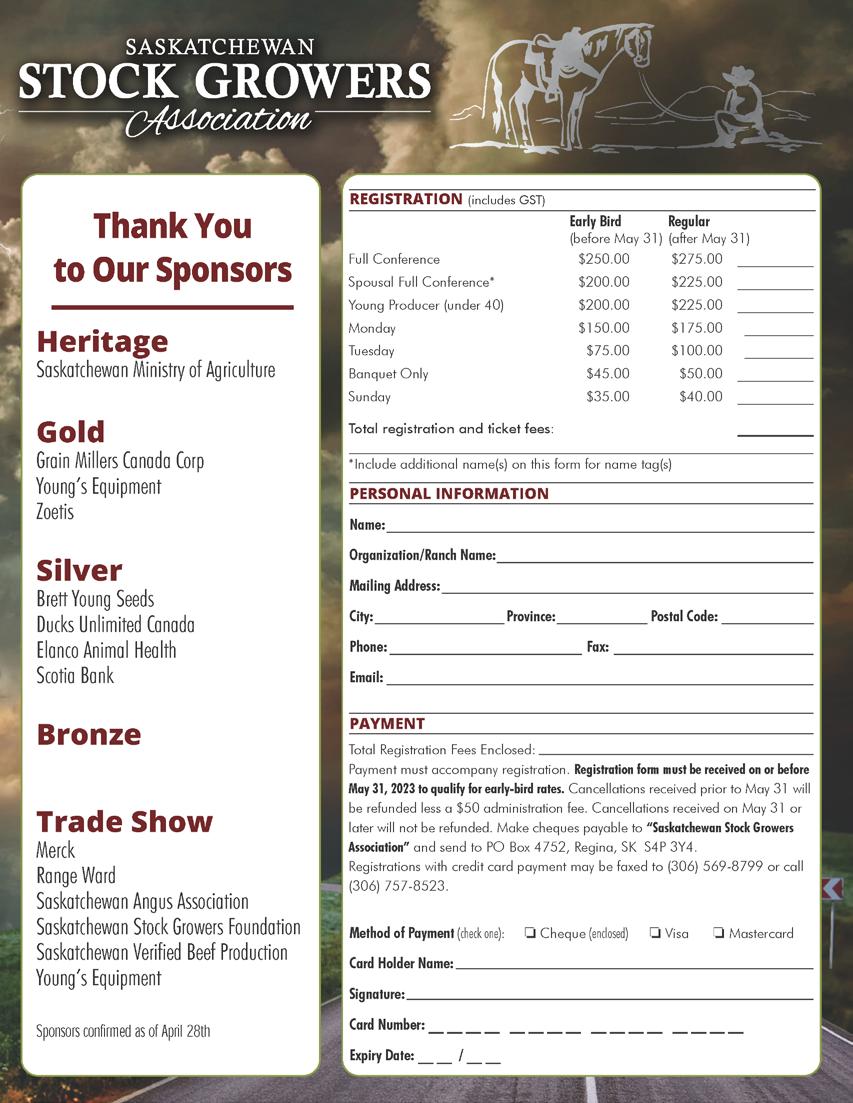
FEATURE
Urgent Call cont. from pg. 25
Explore CFIA’s resources online, then submit your feedback as an individual, organization or anonymously by visiting www.inspection.canada.ca and entering the following phrase into the search bar: Share your thoughts: consultation on proposed changes to Part XV of the Health of Animals Regulations (Identification and Traceability)
According to CFIA’s website, they will review, moderate and post industry’s feedback online at the end of the comment period and take it into consideration before publishing the final regulatory amendments in Canada Gazette, Part II in late 2024. CFIA will delay enforcement by one year to support regulated parties to become familiar with the new requirements.
What you do and say make a difference!
The deadline to make an impact on these regulations is June 16, 2023.
REFERENCES
Canadian Food Inspection Agency
• Share your thoughts: Consultation on proposed changes to Part XV of the Health of Animals Regulations (Identification and Traceability)
https://inspection.canada.ca/aboutcfia/transparency/consultations-andengagement/identification-and-traceability/ eng/1672954519322/1672954519869
• Livestock identification and traceability program: vision, objective, outcomes https://inspection.canada.ca/animal-health/ terrestrial-animals/traceability/livestockidentification-and-traceability-program/ eng/1536593569773/1536593570366
• Identification and traceability - Guide for operators of livestock sites https://inspection.canada.ca/about-cfia/ transparency/consultations-and-engagement/ identification-and-traceability/guide-foroperators-of-livestock-sites/eng/167295968671 1/1672959687938#a2_2
• Canada Gazette, Part I, Volume 157, Number 11: Regulations Amending the Health of Animals Regulations (Identification and Traceability) https://canadagazette.gc.ca/rp-pr/ p1/2023/2023-03-18/html/reg1-eng.html
• Livestock Identification and Traceability Program newsletters
https://inspection.canada.ca/animal-health/ terrestrial-animals/traceability/regulatoryupdate/eng/1557981179942/1557981180213
Canadian Cattle Identification Agency
• Cattle Implementation Plan
http://canadaid.ca/wp-content/media_ releases/Cattle_Implementation_Plan_ Update_2016_03_21.pdf

• The Importance of Livestock Traceability https://www.canadaid.ca/traceability/ importance-of-livestock-traceability/
Government of Alberta
• Bovine spongiform encephalopathyOverview
https://www.alberta.ca/bovine-spongiformencephalopathy-bse-overview.aspx
Statistics Canada
• Number of cattle, by class and farm type https://www150.statcan.gc.ca/t1/tbl1/en/tv. action?pid=3210013001&pickMembers%5B0 %5D=1.1&pickMembers%5B1%5D=2.1&cube TimeFrame.startYear=2001&cubeTimeFrame. endYear=2023&referencePeriods=20010101% 2C20230101
How would CFIA enforce compliance?
What would be the penalties for noncompliance?
SASKATCHEWAN INDUSTRY’S KEY ISSUES WITH THE PROPOSED REGULATIONS:
Animal identification-related costs, including: 1) approved indicators and applicators; cattle handling equipment (squeeze chutes, gate neck extenders); 2) RFID reader equipment, software, maintenance, troubleshooting, repairs and upgrades; 3) transportation to animal identification sites; and 4) additional labour (purchasing, recordkeeping, application, re-application after tag loss, and reporting)
Reporting events to the CLTS database (within seven days), including: 1) cost of laptops and/or cellular devices needed to report data;
2) cost of RFID reader equipment, software, maintenance, troubleshooting, repairs and upgrades need to report data; 3) unavoidable lack of Wi-Fi connectivity needed to report data; 4) training and labour resources needed to use, update, maintain, troubleshoot and repair approved RFID reader equipment; 5) training and labour resources needed to report events
The need for government incentives and cost-share programs for 1) additional labour resources (i.e., to use, update, maintain, troubleshoot and repair approved RFID reader equipment and/or report events to the CLTS database) and 2) continually-changing technology (i.e., RFID reader equipment, software, maintenance, troubleshooting, repairs and upgrades; laptops; and cellular devices) to ease the financial burden that livestock operators are already managing (e.g., inflation, interest rates, taxes and drought recovery)
The need for field team support (in addition to CCIA’s online resources) to train livestock operators to 1) report events to the Canadian Livestock Tracking System (CLTS) database; 2) use, update, maintain, troubleshoot and repair approved RFID reader equipment and software; 3) use an electronic livestock manifest (when available); and to assist on-site during reportable events
28 | ©BEEF BUSINESS | www.skstockgrowers.com MAY 2023
B








www.canadianbeefindustryconference.com @cdnbeefconf @cdnbeefconf /canadianbeefindustryconference AUG. 14-17, 2023 BMO CENTRE, STAMPEDE PARK I N N O V A T E T R U S T LOYAL PROUD FAMILY TRADE DEMAND RTUN I T I O U S GOALS Early bird registration opens MAY 4TH! CBIC IS APPROVED FOR THE RANCHER RESILIENCE GRANT YOU COULD BE REIMBURSED UP TO $1000! SCAN HERE FOR DETAILS AND HOW TO APPLY
Satellite-Based Forage Insurance Proven Possible Using
AIRBUS GPI Tech
Kori Maki-Adair and Jeff Gaye
Saskatchewan Stock Growers Association (SSGA) has recently completed a project to test AIRBUS Grassland Production Index (GPI) technology in order to develop a fully-structure, risk-evaluated, actuarially-sound, marketable forage insurance product that is based on satellite data. This work was funded in part by the Government of Canada under the Canadian Agricultural Partnership’s AgriRisk Initiatives.
Producer organizations, including SSGA, have been calling for governments and their crop insurance programs to adopt satellite-based data to assess rainfall. The information can be localized to a specific farm or ranch, and will allow drought-affected producers to claim for actual losses.
Jeff Yorga, SSGA 1st Vice-President and a rancher from Flintoft, informed SSGA’s board that AIRBUS technology has been proven to work elsewhere, and that it could be utilized for this project by backtesting historical data against groundlevel observations.
In fact, AIRBUS Grassland Production Index (GPI) is a service that is already in use in France, Italy and Brazil, where it enables insurers to cover and protect livestock producers against forage yield shortages by featuring an estimation of grass growth.
“We launched this project to help insurers cover cattle producers against shortages in forage yield resulting from climate hazards like drought and excessive heat during grass and crop development. With that goal in mind, we designed this project to provide more accurate and site-specific rainfall data for determining forage crop insurance claims. Our area of interest for this project is the Canadian Prairies. Our technology of choice is AIRBUS GPI from AIRBUS Defence and Space,” said SSGA General Manager Chad MacPherson.
“We selected Saskatchewan-based Global Ag Risk Solutions to lead the project team and requested federal funding. Global Ag Risk began the technical work in mid-December 2022 and they recently completed the project work and delivered the final report.”
Currently, Saskatchewan Crop Insurance Corporation (SCIC) uses 186 weather stations, located across the entire province, to assess precipitation and temperature. An averaged normal is generated for each weather station. Producers can select a station within 100 kilometres of their insured land and purchase coverage based on these values.
Since Saskatchewan’s total area is 588,239.21 square kilometres and there are 186 weather stations located across the province, one weather station is responsible to cover up to 589.29 square kilometres.
Considering that precipitation can be experienced differently within the same property and from one ranch to the next, one weather station measuring precipitation for a land area of 589.29 square kilometres will have gaps in data accuracy when the information is localized to a specific farm or ranch, which can affect forage insurance coverage and claims.
How did this project testing AIRBUS GPI technology deliver improved measurement?
The majority of Global Ag Risk Solutions’ project work explored and tested the use of AIRBUS GPI’s technology which applies a mesh-grid structure and analytics, built into a high-resolution spatial geographic information system (GIS) signature, that followed the bio-physical patterns of Canadian Prairie grassland.
Since physical weather stations are spatially-sparse, this project combined the
A Geographic Information System (GIS) is a computer system that analyzes and displays geographically referenced information from a variety of data sources to map and examine changes on Earth.
GIS allows for the integration and collective analysis of geospatial data from multiple sources, including satellite imagery, GPS recordings, and textual attributes associated with a particular space.
GIS components include:
• Visualizations through interactive maps
• Data based on the location of features or variables represented
• Spatial analytic functions that focus on identifying trends and patterns across space and time
• Applications that enable tools and services in user-friendly interfaces
- National Aeronautics and Space Administration (NASA)
use of GIS imagery to create highresolution polygon structured maps that prevent information gaps; and meshgrids, which create finer resolution for analysis and measurement.
The project was comprised of four key activities.
1) Data acquisition and structuring, in which the full GPI dataset was downloaded into a structured database for processing;
2) Developing precision-focused data analytics that enabled the creation of an intuitive forage insurance product structure based on variable deductible and premium structures;
30 | ©BEEF BUSINESS | www.skstockgrowers.com MAY 2023 FEATURE
Sample of a mesh-grid structure polygon structure with GIS imagery that follows the bio-physical patterns of Canadian Prairie grassland
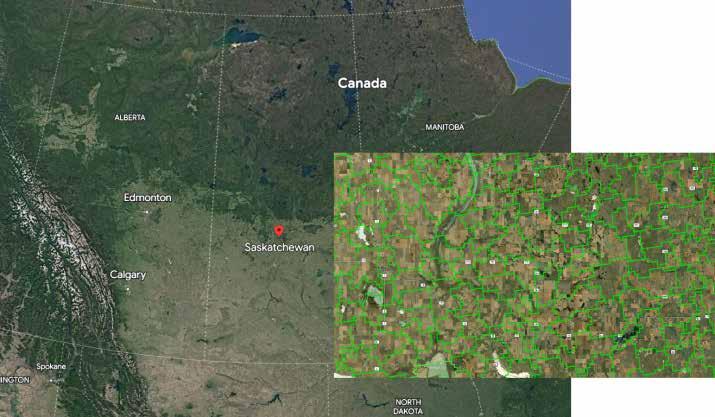
3) Completing an actuarial analysis, which included a full review of the GPI portfolio structure, risk rating, basic-risk mitigation factors, pricing and deductible structures in order to create an actuary-approved rate table and pricing matrix; and
4) Developing an Enterprise Management System (EMS) that supports GPI product compliance requirements and a marketfacing user interface with a transaction management application.
How AIRBUS GPI technology works in France:
Month after month, the indicator is compared to the historical average, the maximum and minimum record years in grassland production, at a local (yet not individual) scale.
When the index drops below an agreed threshold, the insurers compensate all insured breeders in the impacted local province, (within the conditions defined in their respective contracts), without any paperwork or on-site expert inspection.
- AIRBUS Defence and Space
Now completed, the EMS asset includes access attributes with authentication and security protocols; a product enrolment interface with farm profile creation and land identification; an interactive

continued on page 32
RURAL SECURITY CAMERA & CATTLE CAMERA PACKAGES







Our selection of cameras includes these great bene ts:
• Professional installation
• Choose from hardwired NVR or Wi-FI cameras (or both!)
• Choose from built-in Micro SD storage or 4K 2 TB NVR for 24/7 recording (or both!)
• IP65/IP66 weatherproof for year-round protection from Saskatchewan’s harsh winters
• 2K or 4K HD video
• Two-way talk + audio recording
• Colour night vision
• Motion detection LED lights
• Built-in spotlight + siren
• Free app included for peace of mind while you’re away
• Best of all – No monitoring fees, one time payment only
Package #1
Package #2
Lorex 2K Camera With 2-Way Audio indoor/outdoor Wi-Fi installation bundles; includes 1 outdoor Wi-Fi access point.
2 x 2K Cameras with 256GB upgraded video storage $899
4 x 2K Cameras with 256GB upgraded video storage $1399
6 x 2K Cameras with 256GB upgraded video storage $1699
8 x 2K Cameras with 256GB upgraded video storage $2099
Package #3
Lorex 2K PTZ Camera With 2-Way Audio indoor/outdoor Wi-Fi installation bundles; includes 1 outdoor Wi-Fi access point.
2 x 2K PTZ Cameras with 256GB upgraded video storage $1099
4 x 2K PTZ Cameras with 256GB upgraded video storage $1499
6 x 2K PTZ Cameras with 256GB upgraded video storage $1899
8 x 2K PTZ Cameras with 256GB upgraded video storage $2299
Package #4
Lorex 2K HD Outdoor PTZ IP camera with 12x Optical Zoom, 330ft IR night vision; includes 4K 2TB NVR installation bundles.
2 x 2K PTZ with 12x Optical Zoom for $2299
4 x 2K PTZ with 12x Optical Zoom for $3499
6 x 2K PTZ with 12x Optical Zoom for $4399
8 x 2K PTZ with 12x Optical Zoom for $5199
Lorex 4K IP Camera With 2-Way Audio indoor/outdoor installation bundles
Includes 4K 2TB NVR
2 x 4K IP Camera with 2-Way audio $1199
4 x 4K IP Camera with 2-Way audio $1499
6 x 4K IP Camera with 2-Way audio $1799
8 x 4K IP Camera with 2-Way audio $1999
Add additional Wi-Fi cameras installed for:
1080P = $200
4K = $250
2K = $225
2K PTZ = $250
Additional Wi-Fi access points are $300 including installation.

31 www.skstockgrowers.com | ©BEEF BUSINESS | MAY 2023
FEATURE
(306) 533-5259 | QUEENCITYCOMMUNICATIONS.CA
FEATURE
Forage Insurance
cont. from pg. 31
GPI historical time series visualization; policy quote, application and settlement features; and the ability to connect with other systems and information pathways, as well as web and phone applications.
“This research represents a first step in how we are trying to respond to the market needs ranchers have been asking for, we’ve looked around the world to find solutions for cattle producers that respond during a drought,” said Global Ag Risk Solutions President and Chief Executive Officer Grant Kosior.
“Agribusiness is changing quickly with the adoption of technology and satellites to measure and manage production. Utilizing these new tools that are quickly evolving, we intend to create scalable and responsive products that cover the risk for farmers and ranchers better than traditional solutions.
“The cattle business has extremely tight margins, so the need for insurance products to cover lack of feed or increases
in feed costs, at a premium that is affordable, has never been greater,” Kosior said.
According to Kosior’s final report for the project, any future work on the product would need to incorporate the guidance of Agriculture and Agri-Food Canada in relation to cost and risk share. Ongoing industry engagement with all stakeholders, including SSGA, Canadian Cattle Association, Saskatchewan Crop Insurance Corporation and Agriculture Financial Services Corporation, will need to run parallel to product development so that current-state design elements are tethered to future-state requirements.
The final report also indicates that significant evidence exists to accelerate development on the foundation work completed in this project with the goal of commercializing a product pilot for 2024.
To that end, or perhaps for that new beginning, the GARS project team is already tackling the next critical step, which is applying for funding to advance the product toward commercialization. It
has already built objectives, budgets and supporting development activities to prepare a funding application for federal support under the recently launched Sustainable Canadian Agricultural Partnership.

REFERENCES
National Aeronautics and Space Administration (NASA)
Earth Science Data Systems Program
https://www.earthdata.nasa.gov/learn/ backgrounders/gis
AIRBUS Defence and Space
https://www.intelligence-airbusds.com/ markets/agriculture/insurance-finance/ grassland-production-index/
Statistics Canada
Province of Saskatchewan
https://www12.statcan.gc.ca/censusrecensement/2011/as-sa/fogs-spg/Facts-preng.cfm?Lang=eng&GC=47
Global Ag Risk Solutions
Grassland Production Index Insurance Product Development Final Report, April 2023
32 | ©BEEF BUSINESS | www.skstockgrowers.com MAY 2023
B
New Tech Can Help with AI Timing
Jeff Gaye
Timing is everything.
If you keep an eye on your heifers and cows and check them twice a day to detect when they are going into heat, you have a 56 per cent chance of getting it right. That means, if you want to artificially inseminate (AI) them during the first cycle, your odds of hitting the right moment are just a bit better than even.
Ben Rajotte and his D&N Livestock operation are trying out the Merck SenseHub Cow-Calf system this spring to see if it improves the odds. The system constantly monitors and animal’s behaviour in minute-byminute resolution.
The idea is to alert the producer to the ideal time to inseminate or implant embryos.
Ben, his father, and his two brother operate D&N Livestock near Peebles, Saskatchewan. It’s a big ranch with 2,000 to 2,200 head of commercial and some purebred cattle. And, it’s all in cattle — they don’t grow any crops.
Ben says they pay a lot of attention to improving their herd.
“We try to use AI as much as we can,” he said. “Our big focus is on genetics and improving that area.”
D&N is planning to host a field day in June to demonstrate how the SenseHub CowCalf system has been working for them.
The ear-tag monitoring device captures the primary characteristics of heat and health as well as secondary characteristics of heat and health. By monitoring several behaviours, the SenseHub Cow-Calf system improves sensitivity and specificity of animals on, or not on, the report.
A producer is alerted to the cow being in heat via the SenseHub Cow-Calf software
on their PC or mobile application. Cattle in heat are given a Heat Index and Breeding Window to help the producer know the optimal time to inseminate.
Until this season, D&N has been using traditional visual assessments to determine their cows’ heats, aided by estrus detection patches. They want to see if there is a payoff from using the SenseHub Cow-Calf technology.
“One of the biggest things would be the accuracy on timing of the heat,” Ben said. “From the time you see a cow in a standing heat and their sticker’s scrubbed off, a rule of thumb we follow is we wait 12 hours before we AI.
“Mind you, we’re not out there at one in the morning or all through the night checking them; so, then our timing can be off by, say, six or seven hours, which in turn can decrease our conception. Whereas with this, it’ll give us an exact time of when they were standing and an exact time of when to AI; so, that should increase their conception.”
Time of day (or night) is an issue: according to one study, 56 per cent of cows and heifers enter standing heat overnight (between 6 p.m. and 6 a.m.). Even a rancher has to sleep sometime; so, there is a greater chance of missing the optimum time to AI these cattle.
With the SenseHub Cow-Calf technology, producers are notified when each tagged animal enters standing estrus. This eliminates the extra labour of visually checking, while at the same time improving the pregnancy rate.
For Ben, it’s all about working smarter instead of harder.
“What we’ve done is use a heat patch that we put right on the back, and then we keep them in about a five-acre paddock,” he said. “We keep them there for 21 days and then we ride through them three
times a day on horseback, and we’ll pull the ones that are scrubbed off and then AI them accordingly.
“The idea with these [SenseHub Cow-Calf] tags is to cut back on labour. Sorting is the most time-consuming part of AI and breeding.”
But, there are also advantages to getting it right the first time. D&N only uses AI in the first cycle; so, they want to get the most value from those genetics. Logically, the more calves they can get from first-cycle breeding, the greater genetic value and higher weaning weights they will realize.
“One reason it’s so important is we feed our own calves in a feedlot. And, we do see the benefit of the genetics in the feed efficiencies and in the maternal traits in the females,” Ben said.
AI is a cost-efficient way to optimize those traits, but it only pays off if the cows and heifers get pregnant.
“Long story short,” Ben said, “there are bulls out there we can’t afford. But, we can afford semen from those bulls.”
The field day will be at D&N on the second weekend in June, and will give participants an opportunity to see SenseHub Cow-Calf in action. It will also demonstrate how the interface works with an antenna and controller system to generate alerts.
The SenseHub Cow-Calf technology is owned by Merck Animal Health and distributed in Canada by dealers such as WestGen. Representatives from both companies are expected to be at the D&N field day to answer producers’ questions.
For information on the field day, please contact Samuel Wauer at 306-501-0385 | samuel.wauer@merck.com and/or Chris Maher at 604-626-7396 |
cmaher@westgen.com. B
33 www.skstockgrowers.com | ©BEEF BUSINESS | MAY 2023 FEATURE
April

THE AFFORDABLE FINANCING OPTION
Our vision is growing the livestock industry by providing innovative, a ordable and competitive nancing options for Saskatchewan producers. The co-operative is pleased to o er the following programs:

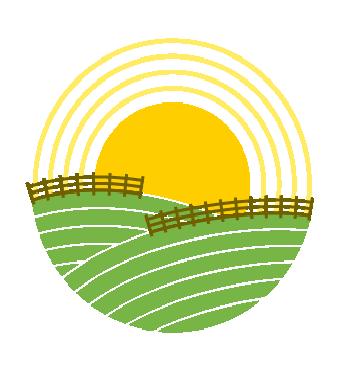
YOUNG PRODUCER PROGRAM AVAILABLE TO 4-H PARTICIPANTS
FEEDER CATTLE
12 MONTHS | 5% DEPOSIT
BREEDER CATTLE
5 YEARS | 10% DEPOSIT
FEEDER BISON
18 MONTHS | 5% DEPOSIT
BREEDER BISON
6 YEARS | 10% DEPOSIT
MAY 2023 SCIENCE AND PRODUCTION
Active Missing Livestock Files
15, 2023 Area Missing From # of Head Animal Description Brand Description Brand Location RCMP Detachment Livestock Services of Saskatchewan Contact Date Reported RM #222 Unknown number of cows and calves in missing file under investigation Various Cpl Owen Third 306-537-9448 Moose Jaw 306-694-3709 March 27
Visit us at SKLIVESTOCKFINANCE.CA or call (306) 775-COWS (2697)
Ratesas lowasPrime0.5% +
Livestock innovation in the field.
OVER 60 exhibitors highlighting equipment, services and tools
FEED MIXER Demonstrations and Equipment Ride & Drives

NEW Cattle Dog Competition
July 18-20, 2023
@aginmotion |
LANGHAM
Ag in
aginmotion.ca Visit BMO Livestock Central for everything livestock all in one place at
Motion!
It’s a safe bet that almost every reader is familiar with the term traceability. Since the BSE crisis two decades ago, the cattle industry has been working with the federal government to ensure that a widespread shutdown of market access never recurs. The economic devastation to the industry from one infected cow in May 2003 cannot be understated.
Livestock traceability allows for any disease outbreak to be managed in a way that minimizes impact and retains market access. For the most part, consumers understand that in any food production chain, there is a risk of contamination, disease or other safety issues.
What consumers expect is a plan to manage that risk. This is what traceability is all about: risk management.
As a producer, my goal is to produce food that is nutritious, delicious and safe for consumption. These attributes are my responsibility while the animal is in my care. Once the critter leaves my place, that responsibility moves to the feeder, then to the processor, then to the retailer.
These joint goals are the mark of confidence that the consumer can rely on when they purchase Canadian
The Old Has Become New Again
Jason Pollock
beef. Traceability is simply a record of this process.
The rationale for the record, as mentioned above, is to minimize impact when stuff goes wrong. Knowing the milestones in an animal’s life is key to containing any outbreak. Pinpoint accuracy is required for reduced impact, and this accuracy and access to records is the lynch pin of the system.

Using approved indicators for animal identification, premises identification and movement reporting, the system can narrow down the affected area to quarantine the smallest number of animals possible.
The issue of quarantine is a big one because our business is built on movement plans that are timed to the day and to the pound. Missing those planned movements results in big costs to the industry. The faster the system can get moving again, the less cost incurred. This is the desired outcome of the recently tabled traceability regulation (i.e., animal movement reporting).
The proposed federal regulations are in the final comment period before being passed into law. Saskatchewan Stock Growers Association (SSGA), along with the rest of the owners of Livestock Services of Saskatchewan (LSS), are in the process of crafting formal responses to submit on behalf of their stakeholders. I would encourage everyone to connect with your zone representatives and discuss how the proposed regulations affect you, and to log onto the federal government website to read the pending changes.
Canadian Food Inspection Agency has produced a summary presentation that is available for the public that outlines the changes for the cattle industry. Any Canadian citizen can provide feedback until June 16, 2023. The legislation affects each part of the sector and each producer differently, depending on their situation.
The bottom line is that if you move cattle on or off your property to a different premises for any reason, you will be required to submit this movement information to the national database. This is a big change in reporting requirements.
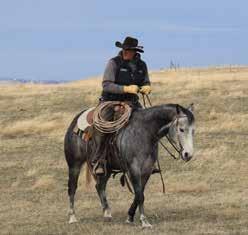
The livestock industry has effectively used the required provincial manifest information, with which we are all familiar, for assisting traceability efforts to manage disease issues. The Saskatchewan provincial legislation has been recently updated and supports the pending federal regulation. The paper-based system we use in Saskatchewan is an accurate record of movement from one owner to another (i.e., manifest of movement) and one location to another (i.e., permit), but has its limitations outside of commercial transactions.
LSS is working on a digital documentation solution to the growing mountain of paperwork that each producer is required to fill out and either submit or retain. More than once, I have mentioned here that good paper is good business, and it seems with the digital world is moving ever forward into our lives, so I will need to amend this to say ‘good documentation is good business.’ My old adage is now new.
On that note, it is time for my annual rant about good documentation and some of the things we can do to protect ourselves in business transactions. The temptation to ease up on the formalities, because they are your neighbour or someone you have done business with before, should be quashed as soon as you feel tempted to do so. If we become involved, it is often these situations that usually turn out badly for the animal owner due to a lack of documentation.
The weather is fickle at best and dirt is expensive, regardless of whether it is growing canola or grazing cattle. That cost shows no sign of letting up. It is no wonder then that many livestock operators regularly seek grazing or
36 | ©BEEF BUSINESS | www.skstockgrowers.com MAY 2023 SCIENCE AND PRODUCTION
Chief Executive Officer Jason Pollock Livestock Services of Saskatchewan
feeding options away from home when the operation’s internal capacity does not allow for retention to maintain or grow their livestock operation.
Thankfully, there are producers who do have grazing/feeding capacity and are willing and able to custom graze or feed. LSS staff are routinely involved in inspection of comingled livestock at many locations even when inspection is not a legislated requirement. We are also involved under our authority regarding ownership matters when issues arise around contracts.
To prevent myself from sounding like a broken record, I asked Garth Woods, LSS Operations Manager, to provide some feedback on some of the simplest and most effective ways to protect all parties as weather and conditions determine plans for managing animals. Here is what he provided:
• In a court of law, the diligence around your understanding of what provincial and federal legislation can and cannot do for you lies with you. It is important that a caretaker understands what options are available to secure fair payment and removal of the livestock. It is important also that a livestock owner understands their rights as an owner. LSS and the Royal Canadian Mounted Police (RCMP) will be limited in what protection we can provide to an open-ended civil arrangement gone wrong.
• LSS has worked very closely with the RCMP F Division over the years, and this has been enhanced with the creation of the Livestock Investigator position in 2022. Together, we can navigate many hurdles to the benefit of industry, supported by provincial and federal regulations. Whether you are a caretaker or livestock owner, how we are able to support your situation depends almost solely on your diligence in crafting and adhering to a good contract.
• People often lose sight of the fact that good paper (i.e., documentation) includes a package of information containing much more than the contract price and party names; namely, a livestock manifest.
• Like the protection provided by a brand around ownership, there are other particulars to document in order to support a successful civil grazing or feeding arrangement where livestock owned by one party are to be kept by another party.
• The contract itself is key to outline the responsibilities of each party. Within the contract, one key item often overlooked involves the end date. When is a suitable and practical date and what happens if it is exceeded? Who is now responsible for items not considered in the contract?
Due to weather, overhead costs, grazing capacity limits and other factors, there are many good reasons for both parties in an agreement to adhere to the end-date goal. The livestock owner will have some timesensitive movement and marketing plans, just as the caretaker will have some feeding or grazing capacity restrictions.
• A producer moving livestock within Saskatchewan, where there is no change in ownership, is not compelled by Saskatchewan legislation to call for inspection prior to movement. I am not going to tell
you that every movement of livestock should be inspected by LSS because that is impractical and unnecessary.
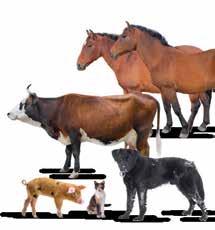
• The requirement to complete a livestock manifest prior to movement creates the ideal tool to outline and provide all parties with a detailed record of the inventory to be moved and cared for. It is old school, but tried and true. There is a copy for the owner, the transporter and the receiver — and they should all detail specifics important to the contract.
• Key details include when the animals were hauled, how many were hauled, what brands and approved indicators (i.e., tags) were on them, who hauled them, where were they hauled and who received them.
• Keep your copy of each manifest. We find that people complete manifests initially, but fail to store this critical record in a place more secure than the dash of the truck, which is not considered good storage on a windy day.
It seems Garth and I are singing from the same song sheet. We both wish you well in your business arrangements in the coming season.
Necropsy
Histopathology
Surgical Pathology
Dermatopathology
Immunohistochemistry
Clinical Pathology
Endocrinology
Bacteriology/Mycology
PCR
Genomics
Parasitology
Serology
Virology
Immunology
Toxicology
37 www.skstockgrowers.com | ©BEEF BUSINESS | MAY 2023 SCIENCE AND PRODUCTION
Accredited by American Association of Veterinarian Laboratory Diagnosticians (AAVLD); Standards Council of Canada, and CFIA for specific tests. (306) 966-7316 | www.pdsinc.ca PROVIDING A FULL RANGE OF VETERINARY DIAGNOSTIC SERVICES
PRAIRIE DIAGNOSTIC SERVICES INC P D S B
A Report from Garner Deobald President, Saskatchewan Stock Growers Association
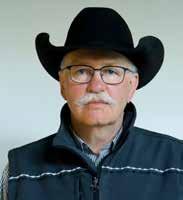
gain back some profits and more control over the market. Volatile markets and unpredictability will exist as always, so we need to manage accordingly.
the search bar: Share your thoughts: consultation on proposed changes to Part XV of the Health of Animals Regulations (Identification and Traceability)
President Garner Deobald Saskatchewan Stock Growers Association
With the long winter now slipping away and turning into a memory, we are focused on the opportunities that lie ahead.
Spring brings with it a sense of hope and optimism, this year it is warranted. Water and moisture conditions have improved in many areas, but I recognize there are areas that are starting the year in a very precarious position when it comes to soil moisture and stored surface water.
One constant is the inconsistent prairie weather we experience year after year, and we sure hope and pray for just the right amount of rain and sunshine for all.
Optimism is at an all-time high in the North American cattle industry at the moment! Cattle supplies are tight and will remain so for the foreseeable future. Beef demand has been steady, let’s hope this continues with few outside disruptions or negative impacts due to economic factors.
Markets for fed cattle, butcher cows/bulls and feeder calves are creeping up to alltime highs; we’re not there yet, but the trend is leaning in that direction. Grass calves and breeding heifers are in short supply and have shown an incredible surge year over year. Reports out of United States are showing that packers are throttling back their daily kill numbers to
All producers and industry partners need to be aware of a significant change coming for livestock identification and traceability. In the eyes of Canadian Food Inspection Agency (CFIA), currently, there are gaps in our system which hinder Canada’s ability to prevent, prepare and respond to disease outbreaks — resulting in costs to government and industry, and negative impacts in terms of access to export markets. CFIA is proposing regulatory amendments to address the gaps they have identified.
Some of the proposed changes that will have the greatest impact on our industry are related to premises identification; reducing the current reporting time for animal movement, from the 30-60 days to seven days; excluding feedlots from being categorized as approved animal identification sites (formerly known as tagging sites); introducing animal movement reporting requirements for moving animals to and from community pastures; as well as changes to reporting the export and import of animals.
CFIA posted the proposed changes to Part XV of the Health of Animals Regulations (Identification and Traceability) in Canada Gazette, Part I on March 18, 2023 with a 90-day final comment period which concludes June 16, 2023. It is anticipated the final publication in Canada Gazette, Part II will be in late 2024 with enforcement of the changed regulations to occur in 2025/2026.
I urge everyone involved in the livestock industry to read the proposed changes in their entirety and please comment on these changes. Access the CFIA website to learn more and submit your feedback by visiting www.inspection.canada.ca and entering the following phrase into
Please consider this your invitation to attend the 110th Saskatchewan Stock Growers Annual General Meeting and Convention June 4-6, 2023, in Moose Jaw.
This year’s lineup of speakers and presenters is outstanding with many hot topics of the day. I am sure the proposed regulatory changes coming for livestock identification and traceability will be part of the discussion throughout the convention.
Please join us for serious conversation, some time to socialize and enjoy the company of ranchers, farmers and people from all segments of the industry.
For more information, please visit www.skstockgrowers.com or contact the office at 306-757-8523
I look forward to see everyone in Moose Jaw in June — See you then!
Until next time…
Garner Deobald
38 | ©BEEF BUSINESS | www.skstockgrowers.com MAY 2023 ASSOCIATION NEWS AND REPORTS
Garner
SELENIUM & VITAMINS A, B12, D3 & E DOSING HAS NEVER BEEN EASIER
Vitaferst-Care TM
is a convenient oral supplement designed to address the neonatal nutritional needs of calves, lambs and goat kids.
One Oral Dose instead of multiple needles
Draw off cap and oral syringe included with every bottle
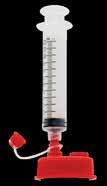
To be administered after colostrum to avoid passive immunity impairment.
Vitaferst-Care’s Oral Formulation

Includes:
Selenium to promote growth New, fortified level of selenium
Vitamin A to promote neonatal immunity
Vitamin D3 to support growth and metabolism
Vitamin E to stimulate the immune system
Vitamin B12 for cell growth and support of the immune system
For more information on Vitaferst-Care TM contact your veterinarian.
Canadian patent nº A8144435CA. Solvet is a subsidiary of Alberta Veterinary Laboratories Ltd. Sol vet .ca NN.U3U5
Finding and Keeping Conservation Common Ground
Tara Mulhern Davidson
This article is the second in a series celebrating 25 years of prairie conservation through the SK PCAP.
In 2023, Saskatchewan Prairie Conservation Action Plan (SK PCAP) marks 25 years of bringing Saskatchewan’s prairie grassland conservation organizations together by creating the PCAP Partnership. It started as a grassroots collection of 16 partner groups assembled under the umbrella of Saskatchewan Stock Growers Association. Today, it has blossomed into a decadeslong conservation movement that has sparked numerous resources, highprofile events, education and awareness campaigns, and a current partnership made up of 34 organizations.
The trail wasn’t always easy, however, and getting diverse groups to work together in a formal partnership, particularly in the early days, was challenging.
A Shift in Perspective
With ranchers and environmentalists sitting around the table, in some cases for the first time, there were some difficult conversations. The science around prairie grassland management was still evolving, and not every partner was in agreement as to how prairie was or should be managed.
Chris Nykoluk, SK PCAP’s first manager, recalls a shift in awareness about the beneficial function of grazing.
“I believe at that time, different groups
were starting to understand the role that livestock played in managing grasslands,” said Nykoluk.
“This idea that although there were issues in the livestock industry that bothered some conservationists, the overarching realization was that livestock was a big part of the solution,” she explained. “We were learning more about how livestock created a patch diversity that was beneficial for different species.”
Miles Anderson was the initial chair of SK PCAP. “The big thing was that folks weren’t understanding each other and were trying to do the same thing, and it took some time to get everybody understanding what the other was meaning,” explained Anderson, who ranches south of Fir Mountain, SK.
Nykoluk notes that key leaders like Anderson were good at bringing the group together to communicate in order to find common ground. “People kind of pulled together and were able to see the bigger picture,” she said. “If PCAP did anything, it got the partners thinking that grazing was not such a bad thing, that it was actually a good thing.”
Accomplishments and Milestones
In the beginning, one thing each partner could agree on was the need to increase awareness about the importance of native prairie grasslands in Saskatchewan.

In 2000, SK PCAP initiated Native Prairie Appreciation Week (NPAW), which is proclaimed annually by the Government
of Saskatchewan. It is the only week in North America dedicated to recognizing the value of native prairie.
“Having recognition for native prairie, even before we really got talking about carbon sequestration and the climate change part, was important,” said Michael Burgess, who was the PCAP chair from 2005 to 2007. “We would have two or three buses of people touring for NPAW and there was quite a bit of collaboration going on.”
In-person events continue to be a mainstay for SK PCAP. While NPAW remains an annual highlight, the organization also identified the need for a Native Prairie Restoration and Reclamation Workshop (NPRRW) that could address gaps in restoration capacity. Since 2011, this biennial event has brought thousands of experts together from across North America.
SK PCAP is also a collaborator with the Transboundary Grasslands Partnership (TGP), a prairie conservation initiative amongst Saskatchewan, Alberta and Montana.
“With any of our events, like NPRRW or the TGP Workshop, networking is always a highlight,” said Carolyn Gaudet, SK PCAP manager. “What I hear over and over again, is how in-person meetings are so beneficial for networking. Whether it’s catching up, swapping ideas, or finding opportunities for collaboration, it’s invaluable. I’ve noticed that you can’t really fabricate situations and force people
40 | ©BEEF BUSINESS | www.skstockgrowers.com MAY 2023
STEWARDSHIP
Participants at the 2022 Native Prairie Appreciation Week Tour learn to identify and appreciate native plants.
to talk to each other, if you put them in a room together, they’ll do it on their own, they just need the opportunity.”
SK PCAP has an active social media and online presence with their “Prairie’s Got the Goods” Ecological Goods and Services Week, a YouTube channel (youtube.com/ user/skpcap), Facebook, Twitter and virtual events.
“Our communication strategies, like our social media channels and our Native Prairie Speaker Series webinars, have developed a dedicated following,” said Gaudet. “It’s an effective way to share information about native prairie that reaches a wider audience.”
Working with students has also been a top priority for the past 25 years and SK PCAP has a variety of curriculum-supported resources. They have engaged more than 100,000 Saskatchewan students through in-school visits, workshops, youth NPAW contests and annual displays at Canadian Western Agribition.
The Future
Kelly Williamson has been the SK PCAP chair for the past three years and is optimistic about the organization’s future.
“It’s been an evolution as far as outreach, and developing quality products,” he said, adding that SK PCAP continues to have a notable presence sharing information about grassland conservation.
One of his highlights as chair has been adding a First Nations organization to the partnership table.
“We really hadn’t had a First Nations group at the table and this past year we got the Saskatchewan Aboriginal Land Technicians (SALT) to join PCAP,” Williamson explained. “It’s a First Nationsbased organization and a step in the right direction for getting more First Nations engagement.”
Like the prairie grassland that is its focus, SK PCAP continues to demonstrate a

lasting presence on the conservation landscape. The organization evolves to find new ways to adapt to challenges and continues to do what it does best — bring prairie people together.

PCAP Managers
Chris Nykoluk 1998-2000
Karyn Scalise 2000-2008
Michelle Clark 2008-2012
Natasha Wilkie 2012-2015 (Tara M. Davidson interim 2014)
Kayla Balderson Burak 2015-2017
Carolyn Gaudet 2017-present (Diego Steinaker interim 2018)
PCAP Chairs
Miles Anderson 1998-2000
Allen Patkau 2000-2005
Michael Burgess 2005-2007
Ray McDougald 2007-2008
Karla Hicks 2008-2011
Roy Rutledge 2012
Orin Balas 2013-2019
Kelly Williamson 2020-present
41 www.skstockgrowers.com | ©BEEF BUSINESS | MAY 2023
B
STEWARDSHIP
SSGF Exploring New Approach to Term CE Compensation
Mindy Hockley
Dr. Jared Carlberg, Professor of Agribusiness and Agricultural Economics at University of Manitoba, has carried out a research report for Saskatchewan Stock Growers Association (SSGA) and Saskatchewan Stock Growers Foundation (SSGF), designed to investigate the differences in returns between cow-calf systems and annual cropping systems based for producers in southwestern Saskatchewan.
The overall objective of the report was to determine long-term returns for both sectors, but was carried out in part to contribute to the ongoing public discussion of appropriate levels of compensation for landowners that sign conservation easements (CEs).
Carlberg looked at per-acre returns in both the cow-calf industry and annual cropping systems for periods of 10, 25, 50 and 100 years. He used a discount rate of five per cent in his research, but this discount rate can be easily varied using the simulation tool Carlberg designed.
The discount rate accounts for inflation, risk and time preference in order to translate (or “discount”) expected future cash flows into today’s dollars. This is important when considering financial implications of conservation easements due to the landowner agreeing to impose restrictions that prevent them from converting that land from grasslands for cow-calf production to annual crop production for a term length or indefinitely.
Furthermore, as grain commodities increase in price, the land value of a parcel under easement would, in theory, remain the same because of those restrictions against converting the land use to something potentially more profitable. Using a five per cent discount rate and average yields with a three-year crop rotation system (durum-lentils-canola), the discounted return on investment for the annual cropping system at the
25-year mark was $341 per acre higher than the cow-calf production system. Over 50 years, the discounted net cash flow increases to $508 per acre more if the land is used for annual cropping versus cow-calf production.
Carlberg’s findings are consistent with recent trends that have seen annual crop production enjoy higher profitability compared to cow-calf production. Using data provided by cost-ofproduction network members through Canfax Research Services, a representative cow-calf operation in the southwest corner of Saskatchewan has barely broken even in the most recent five-year period of information collection.
Accordingly, given the current differences in commodity prices and cattle prices, converting native grasslands into annual cropping can be more attractive to producers in order to get the most monetary value out of their land. While understandable from a farm management standpoint, this trend can be worrying when considering the continuing decline of native grassland ecosystems.
It may be necessary to provide additional incentives in order to continue to keep grasslands intact, and some of those incentives may need to be provided through conservation easements or agreements. In order for those programs to increase participation among landowners, it is necessary to determine appropriate compensation for landowners.
Conservation easements granted in perpetuity ensure permanent protection of the land, which means landowners legally agree not to convert land use from the natural state into something such as annual crop production. The value of this type of CE has historically been assigned by determining the fair market value of the parcel of land, then paying the landowner between one-quarter and one-third of that value.
Since SSGF has created term conservation easements, the compensation for that program is still currently under investigation. Regardless of whether a landowner is signing an easement for a term or in perpetuity, the level of compensation they receive must be sufficient to offset the potential future loss of revenue from alternative uses, such as crop production, while also acknowledging the value of the ecological goods the grasslands provide.
Carlberg noted in his report that using fair market value to determine appropriate compensation for a CE may not be the best approach as this approach poses a number of challenges that may not reflect the actual value of the land.
“My concern with the use of ‘fair market value’’’ Carlberg observed, “is that as an economist, my perspective is that the ‘market value’ of something is not necessarily fair. What someone else is willing to sell their land for does not necessarily reflect my valuation of my own land.”
Carlberg also outlines that the practice of using fair market values can be flawed due to agricultural markets already being notoriously thin and an asset’s true value is difficult to determine in the absence of an adequate number of buyers. Agricultural markets are often characterized by having a small pool of buyers that can exert undue influence over prices compared to competitive markets.
With respect to conservation easements, it can also be quite challenging to calculate the expected future cash flow of a parcel of land with much certainty, which further complicates the process of determining fair compensation. Determining the fair market value takes into account the value of land surrounding the parcel of concern, and if wetlands or other native prairie is present, continued on page 44
42 | ©BEEF BUSINESS | www.skstockgrowers.com MAY 2023 STEWARDSHIP
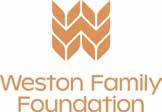
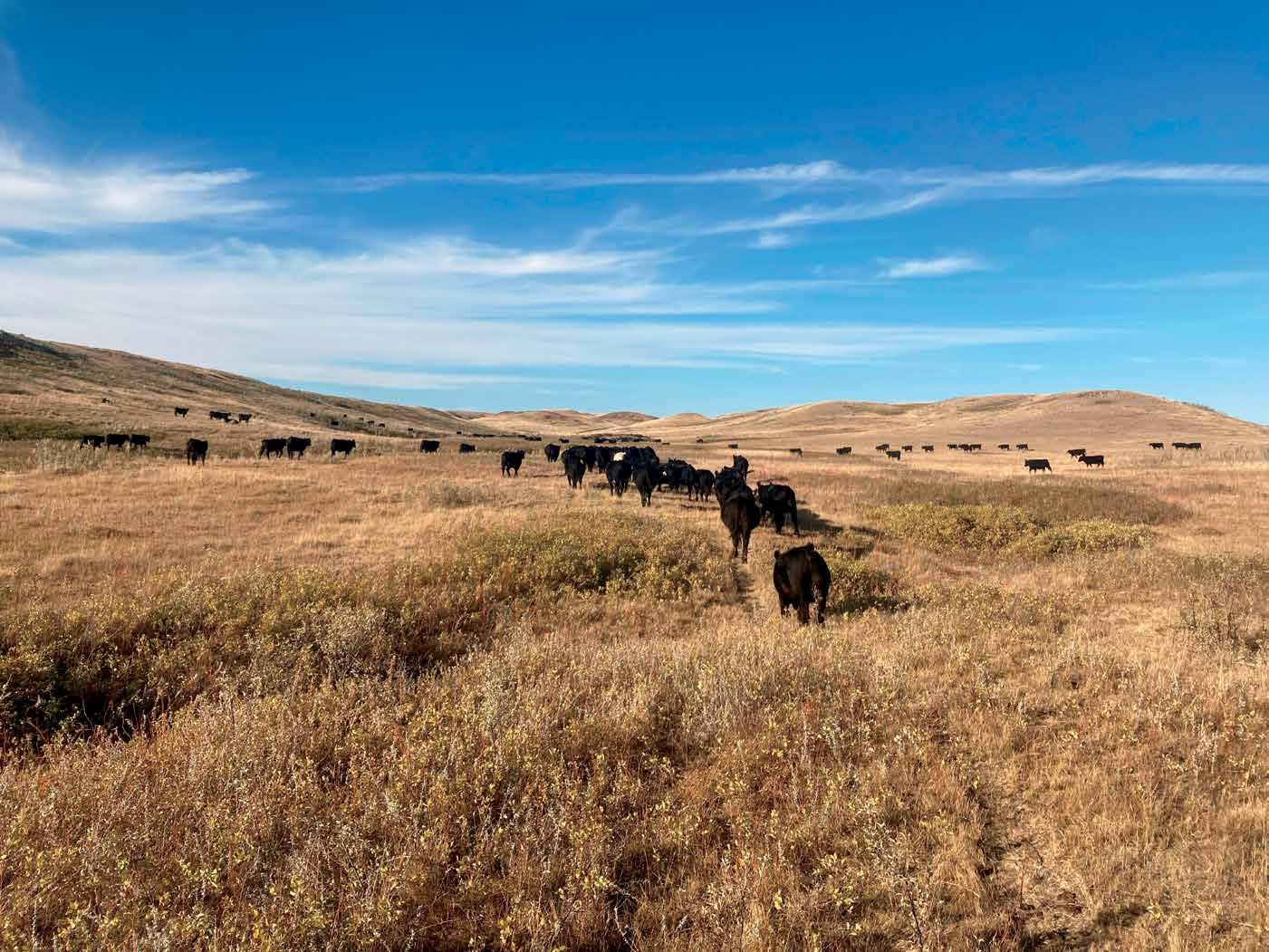
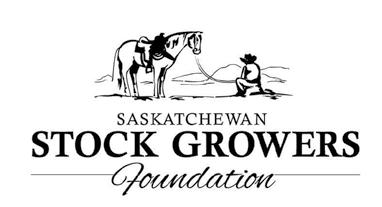


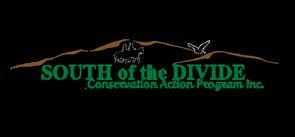
Program Options Include: Habitat Management Agreement Results Based Agreements Habitat Restoration Agreements Grass Banking Check out the Saskatchewan Stock Grower Foundation's Conservation Agreements to access resources and funding available for Saskatchewan landowners while conserving native grasslands. For More Information: www.ssgf.ca 1-306-530-1385 communications@ssgf.ca Looking to improve or expand Looking to improve or expand your native grasslands? your native grasslands?
the land value may be discounted. Conservation easements exist to protect these lands that are currently being discounted by the market, but it is critical to recognize the significant value they contribute to the overall landscape.
A potential further downside to using the notion of fair market value in the assessment of values for conservation easements is that prices can also be negatively impacted if the land is geographically further from alreadyowned land because bidders may offer less due to proximity. This does not necessarily mean the land is worth less, but may cause adjoining parcels of land to be priced lower than what they are actually worth, Carlberg noted, and this adds even more uncertainty to how land can be valued for easements.
Native grasslands on marginal land or even wetlands have been classified as “wastelands” according to financial institutions, which can also push landowners to cultivate or drain these landscapes to increase their overall equity. It is necessary to recognize the benefits the natural landscapes can offer as they are; and, this is incredibly important when it comes to carbon storage and sequestration, water quality, reduction of erosion, habitat for species at risk and numerous other ecological values.
When asked if he believes there is a place for a payment system that rewards not only the landowner who places the easement on the land but also future landowners, perhaps through a mechanism such as the idea of yearly payments, Carlberg mused, “I actually believe a system of yearly payments and flexibility to move in-and-out of CEs would be the best possible solution. There is a discontinuity issue associated with the current structure of CEs — because future landowners are bound by the terms of CEs, and because the benefits of the CE are all paid out front, we create conditions under which the market for the parcel of land attached to the CE cannot function effectively in the future.”

The way that easements are currently paid out only benefits the current landowner and not the future landowners that have to incur the costs of not being able to change how that land is utilized, yet are required to maintain it to provide a set of ecological benefits. The creation of term conservation easements creates a flexibility for landowners to commit to an easement for a set period of time with an option to renew once done. This could make it possible for multiple landowners to benefit from easements payments when the term comes up for renewal.
A considerable number of steps need to be taken to ensure landowners can receive appropriate compensation when signing a conservation easement. SSGF's introduction of term CEs brought our own investigation into how we can properly compensate landowners for the services and goods their grasslands provide,
without the temptation of cultivating the land for annual crops.
Using the information brought forward by Carlberg, SSGF is exploring an incomebased approach to conservation easement valuations to improve compensation for the possible lost opportunities or income when placing an easement on land. Our temperate grasslands are one of the most endangered ecosystems, and easements are one of the ways we can protect them.
Carlberg’s report highlights the potential need for change in how we value conservation easements, and the revenue gap between cattle production and cropping systems. Changes to these payment systems take time, but we are hopeful that one day grasslands under protection by conservation easements will be a more enticing option for landowners when better compensation is available.
B
44 | ©BEEF BUSINESS | www.skstockgrowers.com MAY 2023 STEWARDSHIP
Term CE Compensation cont. from pg. 42
Anytime, Any Season, All Cattle
Cows - Calves - Bulls

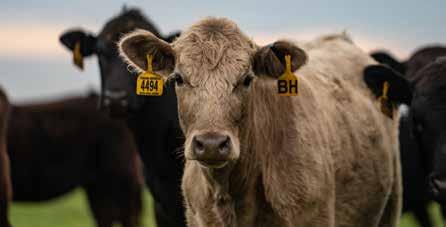
Two Technologies, One Bottle
Endovac Vaccine


Pasteurella & Mannheimia vaccine for Respiratory Protection
Immune Plus
Activates Immune System for a stronger response
Safe and Effective without negative active endotoxins
Protection from E. coli and Salmonella
Only Immunostimulant to be packaged in the convenience of a vaccine
Easy to Use, no mixing, low 2 mL dose
CALENDAR
May 11-14
May 12
Livestock Markets Association of Canada Annual Meeting, Convention and Canadian Livestock Auctioneering Championship
Deadline to submit comments on the Voluntary Labeling of FSIS-Regulated Products with U.S.-Origin Claims Online
May 15 Saskatchewan Prairie Conservation Action Plan: Native Prairie Speaker Series Webinar - SK Conservation Data Centre Data Collection, Sharing & Uses
JUNE
June 4-6
June 8-10
June 15
June 16
June 19
June 20
July 3-6
Saskatchewan Stock Growers Association 110th AGM & Convention Moose Jaw, SK
Canadian Angus Association National Convention Saskatoon, SK
Saskatchewan Charolais Association AGM & Sask Royal Sale Whitecap, SK
Deadline to submit comments on the proposed changes to Part XV of the Health of Animals Regulations (Identification and Traceability) in Canada Gazette, Part I, Volume 157, Number 11: Regulations Amending the Health of Animals Regulations (Identification and Traceability)
Online
Saskatchewan Prairie Conservation Action Plan: Native Prairie Speaker Series Webinar - Archaeology in Saskatchewan Online
Livestock and Forage Centre of Excellence Summer Field Day Clavet, SK
JULY
Beef Improvement Federation Symposium Calgary, AB
July 18-20 Ag in Motion Langham, SK
July 20-22
August 9-10
August 11
August 14-17
Canadian Junior Angus Showdown Swift Current
AUGUST
Saskatchewan Angus East Central Summer Pasture Tour Yorkton, SK
Beef Business Magazine September 2023 Issue Advertising Deadline
Canadian Beef Industry Conference Calgary, AB
September 2023 Beef Business Advertising Deadline
SSGA BOARD OF DIRECTORS
THE EXECUTIVE
Garner Deobald
President Hodgeville, SK Phone: 306- 677-7777
Jeff Yorga
1st Vice President
Flintoft, SK Phone: 306-531-5717
Kelly Williamson
2nd Vice President
Pambrun, SK Phone: 306-582-7774
Chay Anderson
Finance Chair
Fir Mountain, SK Phone: 306-640-7087
Kelcy Elford
Past President
Caron, SK Phone: 306-690-5305
Find email contact for the Executive Directors at skstockgrowers.com
DIRECTORS
46 | ©BEEF BUSINESS | www.skstockgrowers.com MAY 2023
306-640-7087 Keith
306-375-2934 Gerry
306-640-7493 Calvin
306-478-7748
306-421-8538
Gilchrist,
306-662-3986
SK 306-642-8977 Murray
306-266-4377
306-489-2073
306-629-3238
306-544-2660 Kelly
306-582-7774
CHAIR DIRECTORS Zone 1 - Henry McCarthy, Wawota, SK 306-739-2205 Zone 2 - Karen McKim, Milestone, SK 306-436-4616 Zone 3 - Larry Flaig, Assiniboia, SK 306-266-2070 Zone 4 - Brad Howe, Empress, AB 306-661-0409 Zone 5 - Aaron Huber, Lipton, SK 306-331-0097 Zone 6 - Brent Griffin, Elbow, SK 306-854-2050 Zone 7- Darcy Moen, Kyle, SK 306-962-3944 Zone 12 - Rod Gamble, Pambrun, SK 306-582-2077 AFFILIATE DIRECTORS Garner Deobald - SK Charolais Affiliate 306-677-2589 Gord Ell - SaskMilk Affiliate 306-535-1922 Kyron Manske - SK Simmental Affiliate 306-267-7530 Marlene Monvoisin - SK Angus Affiliate 306-648-8200 Rob O'Connor - SK Hereford Affiliate 306-550-4890 Ray Rintoul - SK Shorthorn Affiliate 306-917-7805 Gord Schroeder - SK Sheep Affiliate 306-933-5582 Ian Thackeray - Man-Sask Gelbvieh Affiliate 306-861-7687 Jeff Yorga - SK Limousin Affiliate 306-531-5717 APPOINTED DIRECTOR Dr. Andy Acton - Veterinary Advisor, Ogema, SK 306-459-2422 SASKATCHEWAN CCA DIRECTORS Ryan Beierbach, Whitewood, SK 306-532-4809 Lynn Grant, Val Marie, SK 306-298-2268 Philip Lynn, Marquis, SK 306-361-9299 Duane Thompson, Kelliher, SK 306-675-4562
AT LARGE Chay Anderson, Fir Mountain, SK
Day, Lacadena, SK
Delorme, Assiniboia, SK
Gavelin, McCord, SK
Adrienne Hanson, Langbank, SK
Joe
Maple Creek, SK
Kelly Lightfoot, Assiniboia,
Linthicum, Glentwoth, SK
Miles McNeil, Alameda, SK
Rob Selke, Morse, SK
Lee Sexton, Hanley, SK
Williamson, Pambrun, SK
ZONE
MAY
Olds, AB
Online
AUGUST 11
When you need to provide high-quality forage in an environmentally sustainable manner, Envu is ready with the right solutions. TruRange ™ delivers extended, effective, broad-spectrum

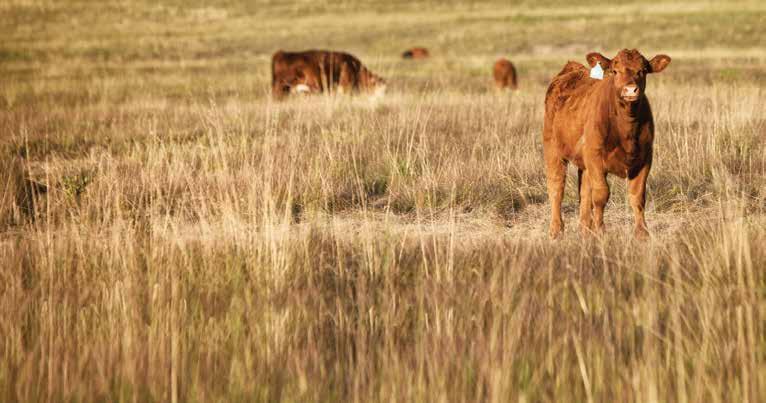
47 www.skstockgrowers.com | ©BEEF BUSINESS | MAY 2023 Agriculture in Motion 35 Allen Leigh 50 Apollo Machine & Products Ltd. 50 ArcRite Welding 49 Austin's Saddlery 48 Bannerlane Horned Herefords 50 Bauma Lighting 1 Beef Smart Consulting 49 Boehringer Ingelheim Animal Health 11 Bud Williams 50 Canadian Beef Industry Conference 29 Canadian Cattle Identification Agency 4 Cargill Animal Nutrition 49 Cows in Control 49 Cowtown Livestock Exchange Inc. 50 Cozy Caps 48 Cramer Ag Cow Pellets 48 Ducks Unlimited Canada 3 East Central SK Summer Pasture Tour 17 Edward Jones 48 ENDOVAC-Beef 2, 45 ENVU Range & Pasture 47 Frostfree Nosepumps 49 Gem Silage Products 49 Great Plains Realty 48 Head for the Hills Shorthorns 48 Hi-Hog Farm & Ranch Equipment 15 John Brown Farms 50 Johnstone Auction Mart 50 Kramer Trailer Sales 49 Linthicum Ranch Ltd. 48 Liphatec 18 Livestock and Forage Centre of Excellence 12 Manitou Maine-Anjou 50 Man Sask Gelbvieh Association 49 Maple Creek Seed Supply 50 Masterfeeds 49 Milligan Biofuels 48 MNP 21 N.M. McMahon CPA 48 New Generation 23 New Vision Agro 50 New-Life Mills 49 Nick's Service Ltd. 13 Norheim Ranching 52 OLS Tubs 51 Jeremy Patzer, Member of Parliament 44 Performance Seed 49 Prairie Diagnostic Services 37, 48 Queen City Communications 31 Quick Look Back 50 Ranchland Livestock Supplies 48 RE/MAX Yorkton, Shawn Pryhitka 49 Rock Block 48 Saskatchewan Angus Association 50 Saskatchewan Crop Insurance Corp. 9 Saskatchewan Livestock Finance 34 Saskatchewan Ministry of Agriculture 8 Saskatchewan Stock Growers Foundation 43 SASKTIP Inc. 41 Sheppard Realty 50 Solvet 39 Target Cattle Concepts 25 True North Foods 16 Union Forage 14 Willow Mills Ltd. 48 Young's Equipment 19 Young Dale Angus 50 ADVERTISER INDEX
control of over 70 weed and brush species for up to 24 months. Its low rates and two modes of action provide easy, affordable range and pasture management without grazing restrictions. Providing extended control of over 70 weed and brush species Megan Herauf | Territory Sales Manager – Alberta megan.herauf@envu.com | 587-434-3411 CONTACT: Brett Armstrong | Territory Sales Manager – Saskatchewan brett.armstrong@envu.com | 403-461-6008 ALWAYS READ AND FOLLOW PESTICIDE LABEL DIRECTIONS. Envu, the Envu logo and TruRange™ are trademarks owned by Environmental Science U.S. LLC or one of its affiliates. ©2023 Environmental Science U.S. Inc. All rights reserved. ca.envu.com 1-800-331-2867 89112-11_ENV_2023_TruRange-Print_BB-7-625x4-875.indd 1 2023-04-21 11:16 AM
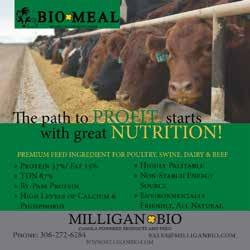


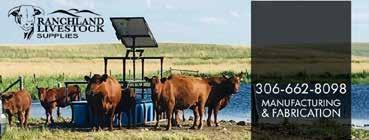













48 | ©BEEF BUSINESS | www.skstockgrowers.com MAY 2023 Member – Canadian Investor Protection Fund Tyler Knibbs Financial Advisor 461 King Street Unit 3 Estevan, SK S4A 1K6 306-634-4870 www.edwardjones.com Know your goals so you can choose your investments. Sold by Horter’s Farm and Ranch Supply 225 Main St South | Bristol, SD 57219 605-216-4852 | horterfarm@nvc.net Find us on facebook Tired of breaking windows while cutting hay? THE ROCK BLOCK The Rock Block is an aftermarket bolt-on kit to reduce rocks and debris from hitting your tractor cab and breaking windows. An a ordable solution to reduce damage and down time THEROCKBLOCK.NET Consigning to Northern Exposure Sale Cattle also for sale by private treaty Dr. Christine Ewert Hill | Dr. Clarke Hill christine.ewert@gmail.com (306) 452-7867 (C) • (306) 452-3803 (H) Redvers, SK S0C 2H0 HEAD FOR THE HILLS SHORTHORNS Linthicum Ranch Ltd. Glentworth, SK Murray & Jan Linthicum (306) 266-4377 Open replacement and bred heifers for sale. Black/black baldy heifers. Custom Fabricating & Manufacturing Specializing in solar powered water troughs Custom Chutes | Hay & Bunk Feeders | Custom Livestock Equipment Maple Creek, SK Call John @ (306) 662-8098 GROWING WITH YOU Rations, supplements & minerals Call Bruce at 306-229-0302 Locally sourced grains & commodities Call Wes at 306-229-5206 www.willowmills.com • AgriInvest and AgriStability • Financial Statement and Tax Preparation • Bookkeeping and Payroll • Tax Planning and Consulting • CRA Assistance • Estate and Trust 604 Government Road South, Weyburn SK S4H 2B4 PH: 306.842.5344 | FX: 306.842.5345 McMahon@McMahonCPA.ca PROVIDING A FULL RANGE OF VETERINARY DIAGNOSTIC SERVICES Accredited by American Association of Veterinarian Laboratory Diagnosticians (AAVLD); Standards Council of Canada, and CFIA for specific tests. (306) 966-7316 | www.pdsinc.ca PRAIRIE D AGNOSTIC SERVICES NC P D S • Necropsy • Histopathology • Surgical Pathology • Dermatopathology • Immunohistochemistry • Clinical Pathology • Endocrinology • Bacteriology/Mycology • PCR • Genomics • Parasitology • Serology • Virology • Immunology • Toxicology Mike Janostin, Owner/Broker Shelly Pobran-Janostin, Associate Broker Serving Farmers & Ranchers Across Saskatchewan! #3-3815 Thatcher Ave, Saskatoon, SK | 306-481-5574 info@greatplainsrealty.ca | greatplainsrealty.ca Connect With Us to Learn More About Buying or Selling! Betty Wyatt Box 27, Wawota, SK S0G 5A0 Cell: 306-577-7182 Main:306-739-0020 cozycaps@outlook.com | www.cozy-caps.com COZY CAPS FOR CALVES Ear protection for newborn calves NEED FEED? 306-520-3553 www.cowpellets.ca
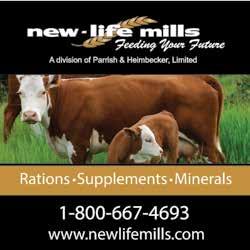
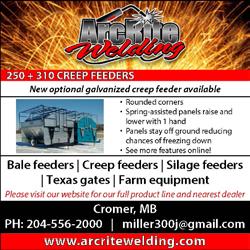

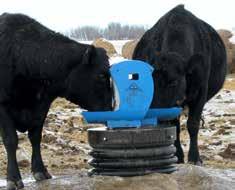


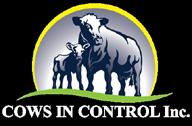







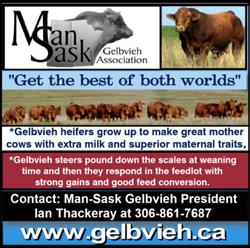



49 www.skstockgrowers.com | ©BEEF BUSINESS | MAY 2023 SIMPLE & RELIABLE YEAR-ROUND LIVESTOCK WATERING No power! Multiple pumps for large herds Saves money Saves time 100% sustainable • • • • • Frostfree Nosepumps Ltd. 866-843-6744 | frostfreenosepumps.com Animal Nutrition Programs designed to achieve optimum health, results & profits – delivered with service beyond the competition. “Masterfeeds is the only brand we trust. It just works.” MASTERFEEDS CUSTOMER SASKATCHEWAN: Humboldt / 1-306-682-2668 Regina / 1-306-721-2727 Saskatoon Premix / 1-306-384-2144 Swift Current / 1-306-773-3001 Phone 403-775-7534 www.cowsincontrol.com MANAGE RISK We’ll help you get the best return for your livestock. CONSUL TING INC. Sma rt B eef • Forage & Feed Analysis • Ration Formulation • Mineral & Supplement Formulation Balanced by BeefSmart Unit 108 4002 Arthur Rose Ave, Saskatoon beefsmart.ca • 306-229-0675 • info@beefsmart.ca Increasing efficiencies and improving profitability of cow-calf, backgrounding, feedlot, bison and sheep producers through nutrition consulting in the prairies. Connect with us today. • Forage and Pasture Systems • Herd Trace Mineral Status Assessments 10029 Marquis Ave., North Battleford, SK Animal Nutrition Manufacturers of Livestock Feeds ORDER DESK 1.800.661.9929 WWW.CARGILL.COM LIVESTOCK , CAR HAULERS AND FLAT DECKS Financing & Leasing aVaiLaBLe kramertrailersales.com We have your hauling needs covered. Check out our website to see what we have in stock or call 1-306-445-5000 and we can discuss your trailer needs. Custom orders available! GOOSENECK, BUMPER PULLS 15’, 20', 25' LENGTHS Contact: Man-Sask Gelbvieh President Ian Thackeray at 306-861-7687 Celebrating 50 years of Gelbvieh in Canada A Farmer Helping Farmers Realtor Ag Specialist 269 Hamilton Rd, Yorkton, SK S3N 4C6 SHAWN PRYHITKA spryhitka@remax-yorkton.ca 306.621.9798 Your AD could be here! Call now! 306-757-8523
MAPLE



Text














50 | ©BEEF BUSINESS | www.skstockgrowers.com MAY 2023 Helen Finucane phone: 306-584-2773 cell: 306-537-2648 Carlyle, SK Manitou Maine-Anjou Bulls (since 1970) We raise the real Maine-Anjou cattle! Call Us You’ll be Glad You Did! manitoumaineanjou.ca garysandygraham@gmail.com Marsden, SK | 306.830.0883 NEW VISION AGRO Box 479 Hague, SK S0K 1X0 email: newvisionagro@sasktel.net Dealer & Distributor For: - Jay-Lor Vertical Feed Mixers - Cargill Rite Now Minerals - Baler twine, netwrap, silage bunker, PH: (306) 225-2226 FX: (306) 225-2063 www.newvisionagro.com Check with us before you buy! covers, plastic wrap, Grain Bags 2502 Millar Ave, Saskatoon 306-242-9884 or 877-255-0187 apm@sasktel.net www.apollomachineandproducts.com • ROLLER MILLS Electric or PTO models ~ 10 sizes available ~ Increase the nutrition value of your feed! ~ Manufactured in Saskatoon • SILAGE COVERS & GRAIN BAGS Machine & Products Ltd. We regroove roller mill rolls - most brands Visit www.stockmanship.com or call 417-719-4910 for more information. We have new books: Smile and Mean it: the Bud & Eunice Williams Story Stockdogs: Partners and Friends 3 2 8 7 Q u a n c e S t r ee t, R egin a , SK OFFICE 3 0 6 . 3 5 2 .18 66 CELL 306.530.8035 shepp a r d r e a l t y. c a Farm & Ranch Real Es It’s what we do. Rob & Joanne Bannerman, Livelong, SK Home: 306 845 2764 Cell: 306 845 7790 bannerman1964@icloud.com
February Sale
year old bulls & bred heifers Cowtown Livestock Exchange Inc. Maple Creek, SK Regular Sales every Tuesday @ 10:00 a.m. Locally Owned & Operated Call for info on Presort & Other Sales Phone 306-662-2648 Toll Free: 1-800-239-5933 CT www.cowtownlivestock.com Pricing on all Perennial Forages
Annual
Two
CREEK
GRASS SEED FOR SASKATCHEWAN
SEED SUPPLY NATIVE
Ltd.
McDougald
Raystock Holdings
Ray
or Call 306-662-7636
Arranged to your location All types of commercial and purebred livestock auctions and farm sales. Wash rack facilities for livestock Wayne or Scott Johnstone Box 818, Moose Jaw, SK 306-693-4715 (Bus) Fax 306-691-6650 www.johnstoneauction.ca CAMERA SYSTEMS FOR FARM & RANCH JOHN SMORODEN (250) 417-5412 info@quicklookback.com 1075 - 26th Ave. South Cranbrook, B.C. V1C 6Y7 www.quicklookback.com A SSOCI AT ION SA S K AT CH E WA N o ce @saskatchewanangus.com cdnangus.ca/saskatchewan-angus-association 306-537-1518 Trusted Quality, Trusted Support, Trusted Service! 545 Assiniboine Ave, Brandon, MB I TF: 1.866.289.8164 T: 204.728.8878 I info@allenleigh.ca COWCAM Wireless & IP Systems Makes your calving €easier, safer & more profitable! • Smartphone compatible • Save more calves • Stop disturbing them and check more frequently www.precisioncam.ca Cam Allen Leigh Security & Communications Ltd.
rmcdougald@xplornet.ca Delivery







 - JW Henson Hillview Farms
- JW Henson Hillview Farms



















 Terry Bedard
Terry Bedard
































































































































